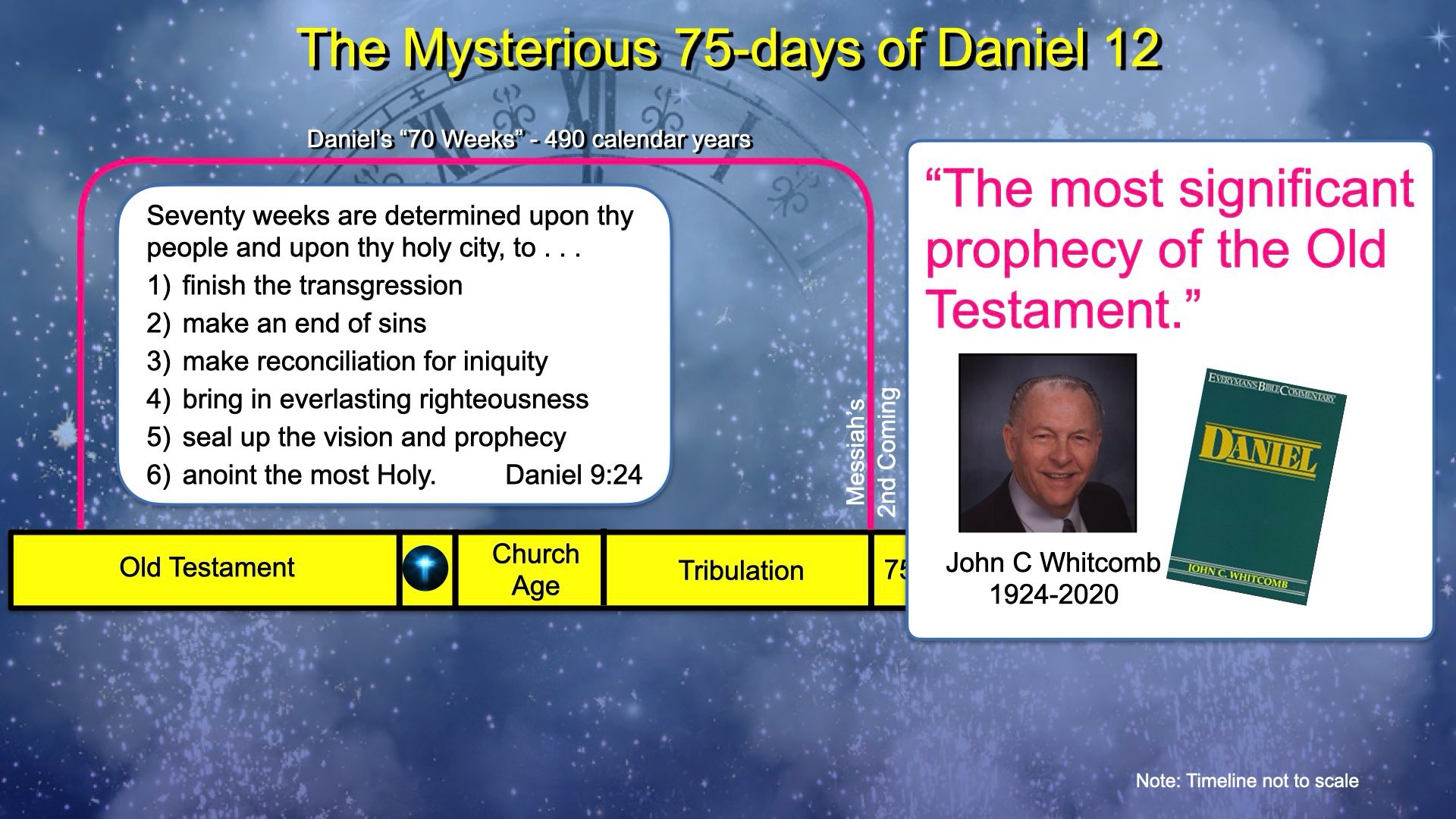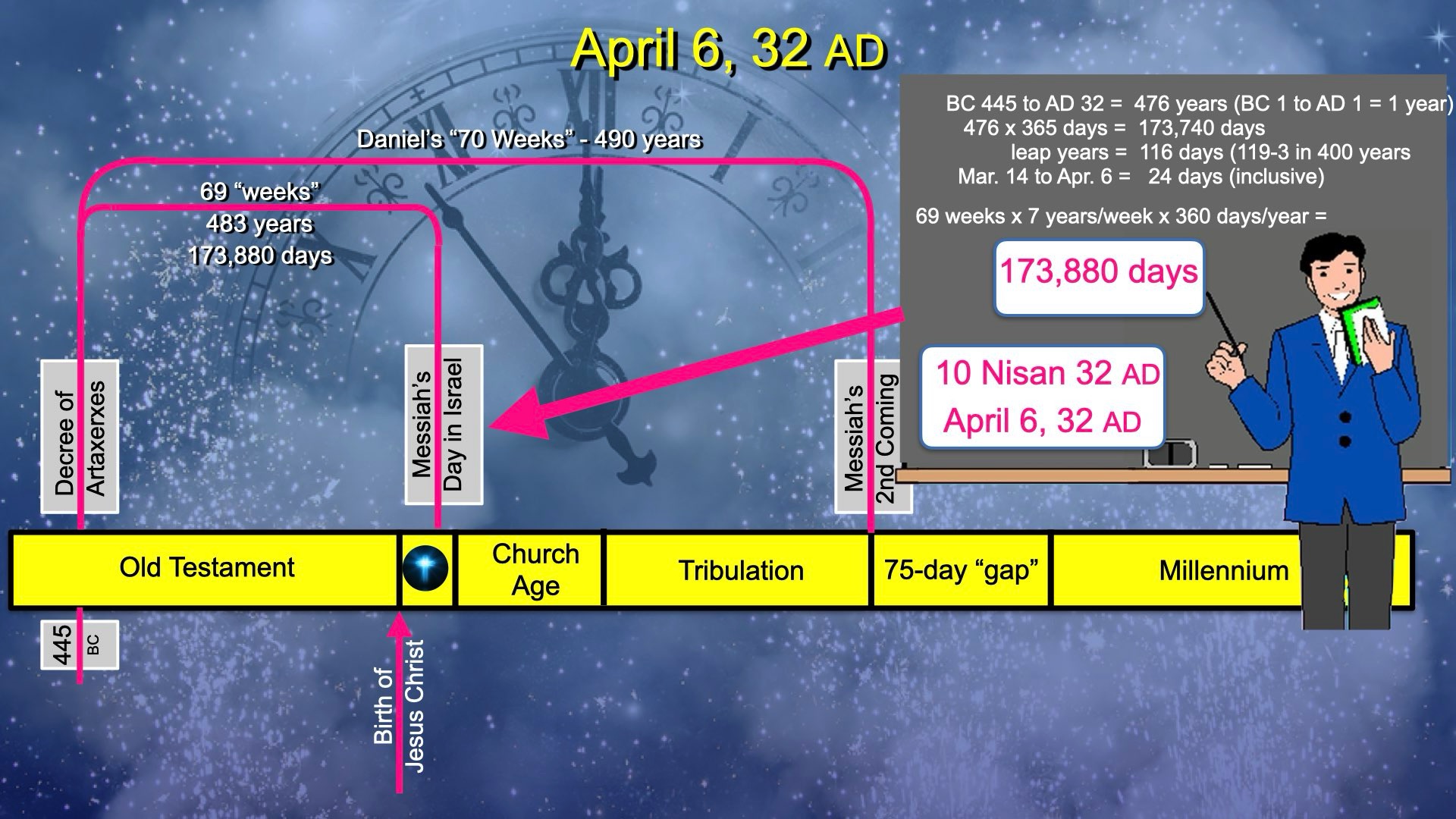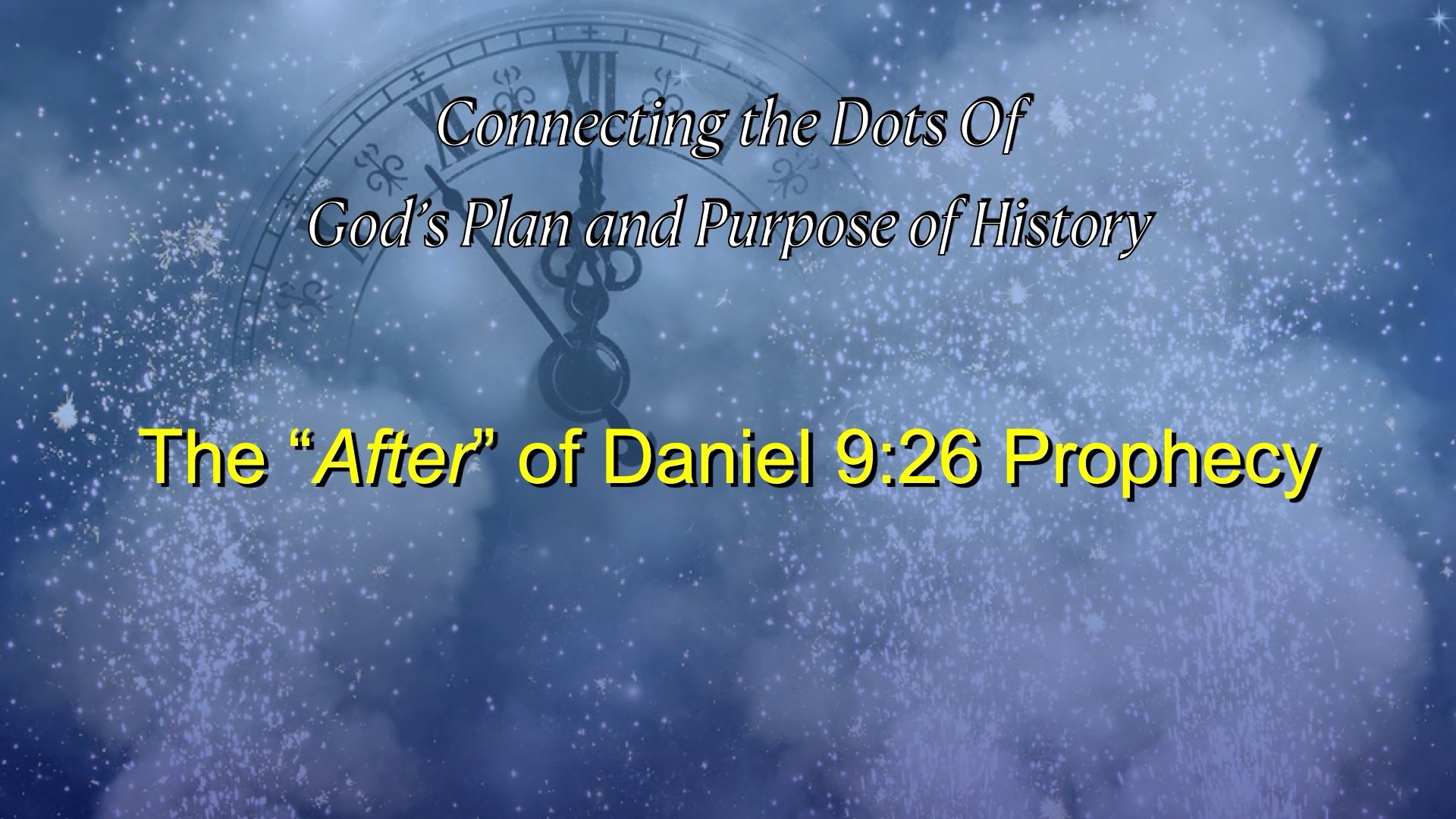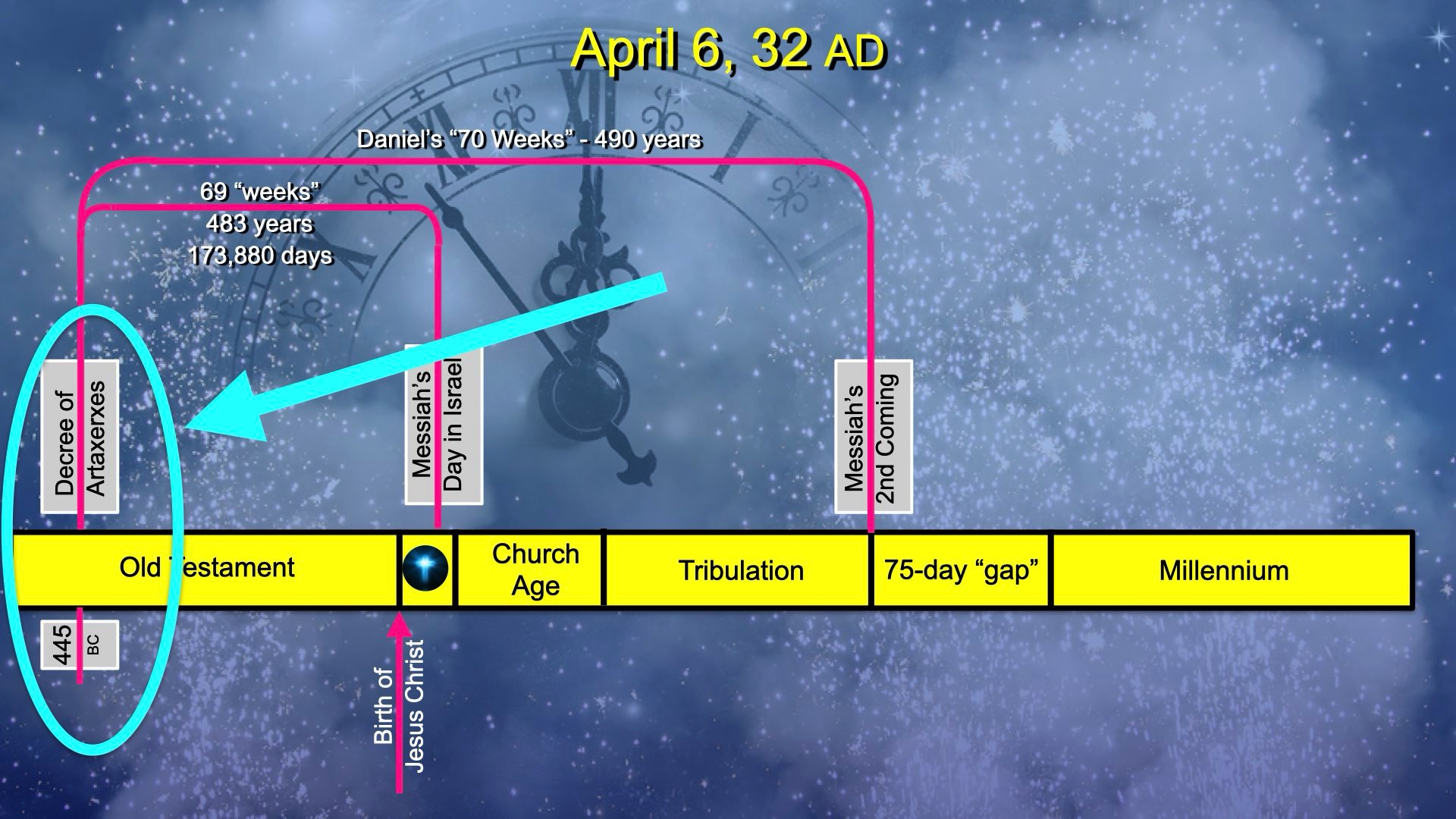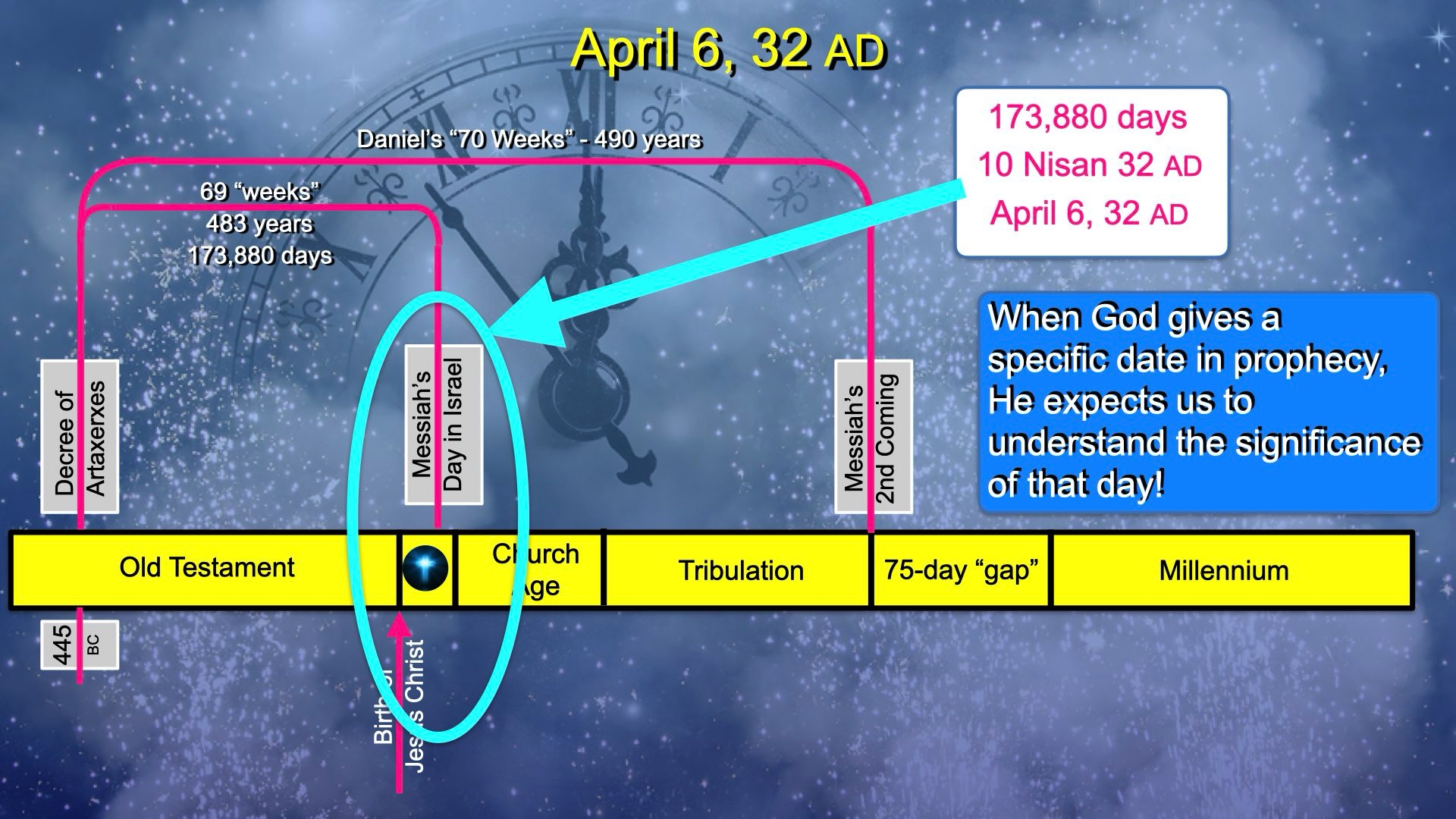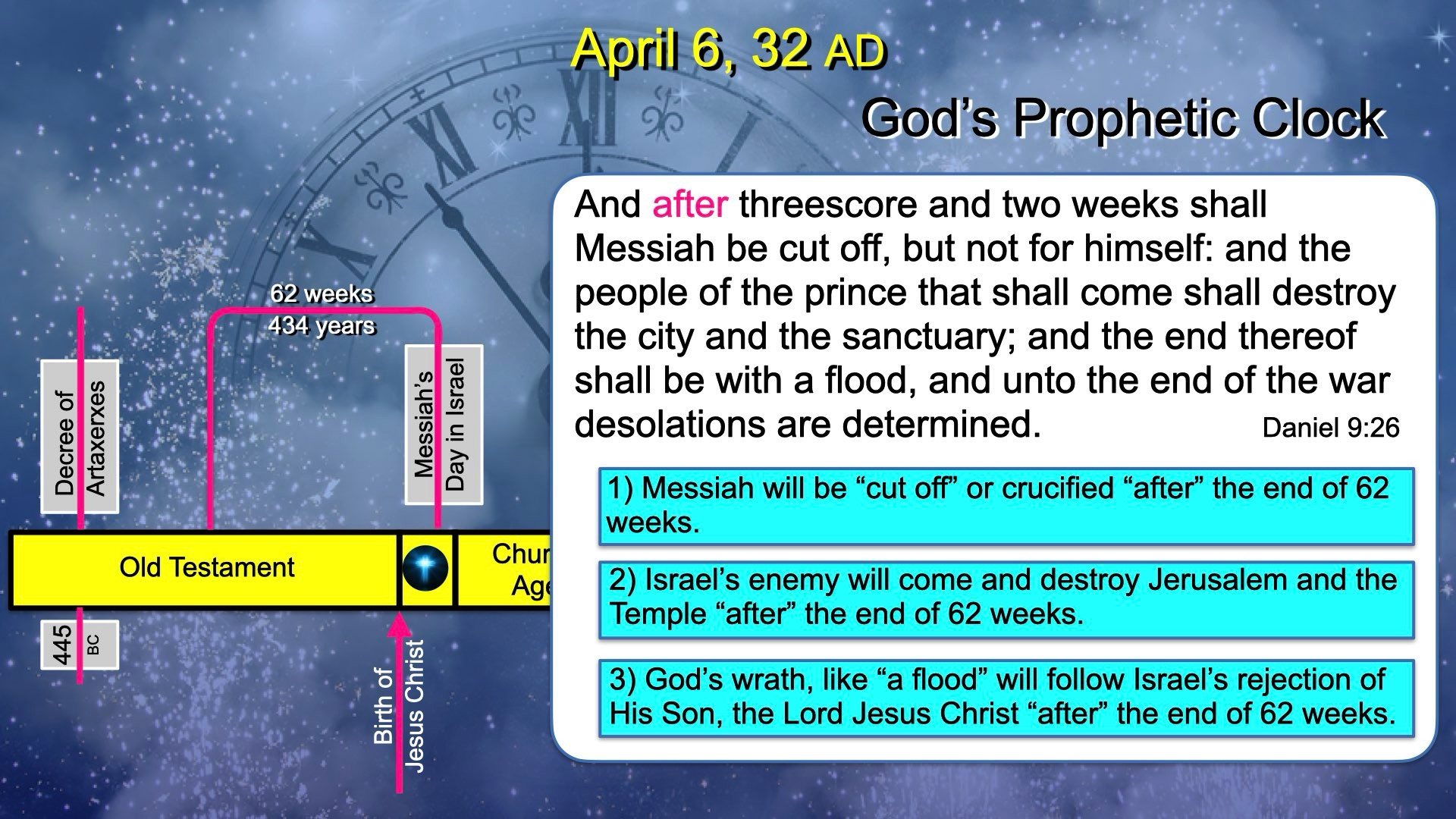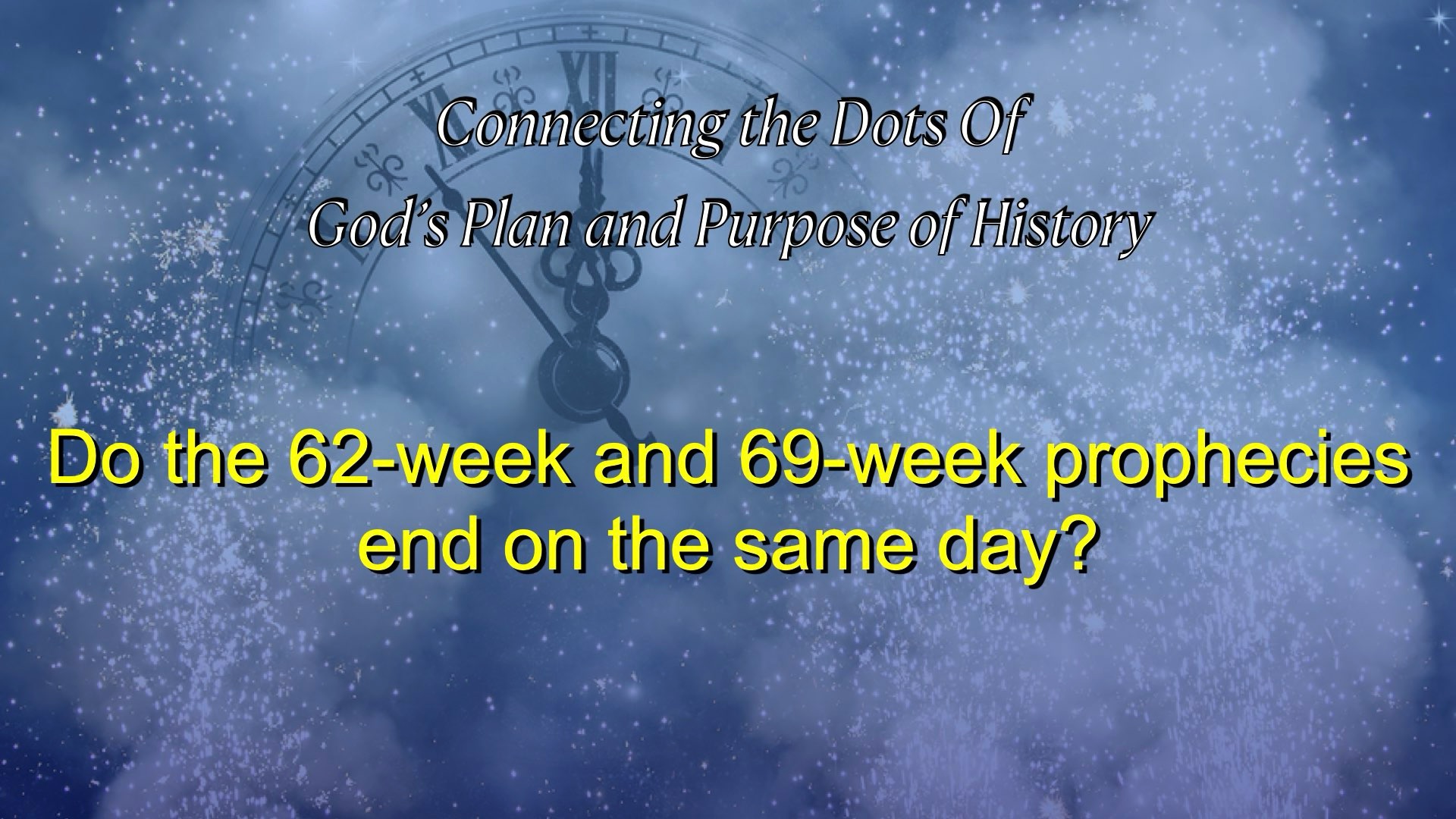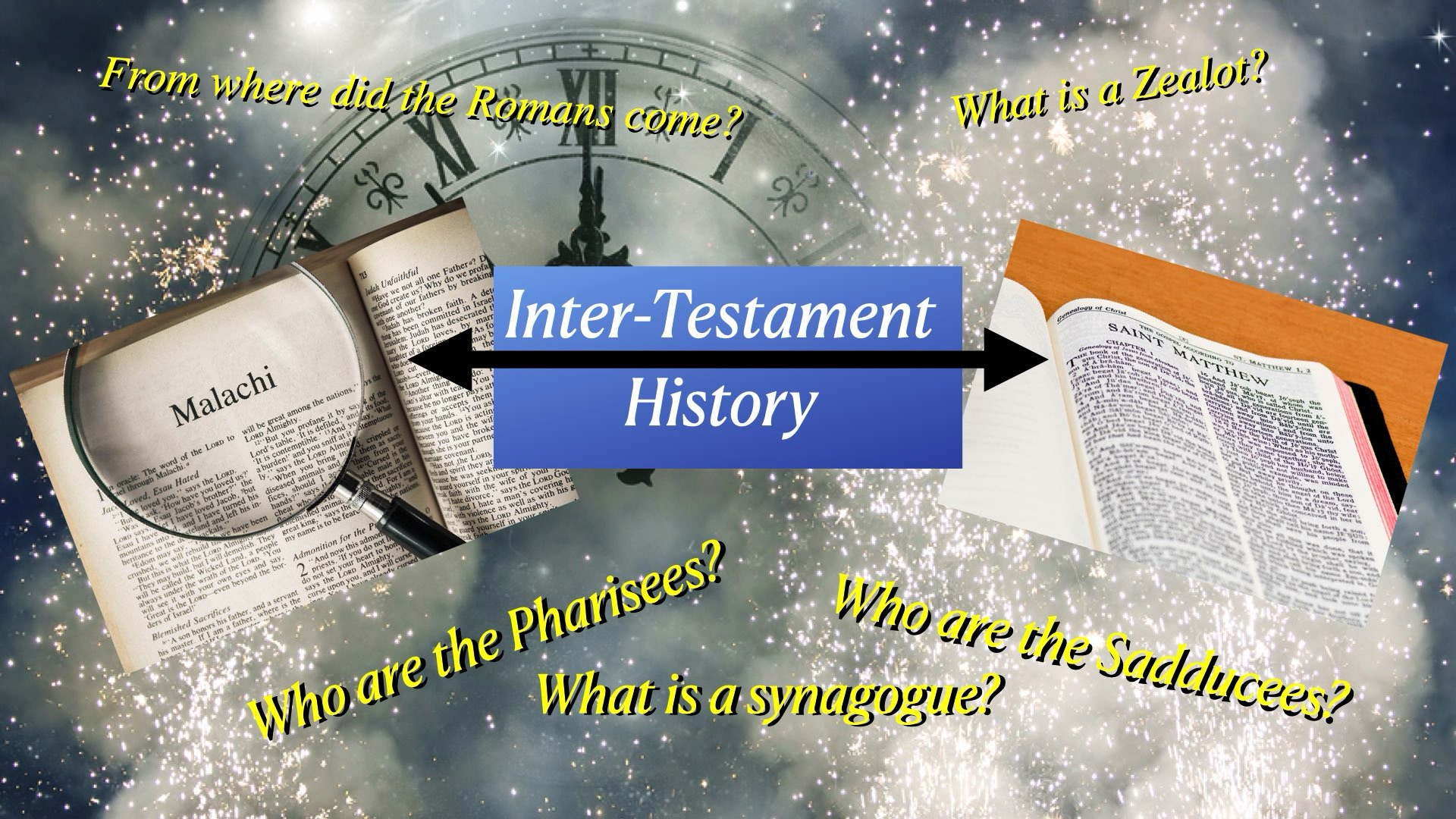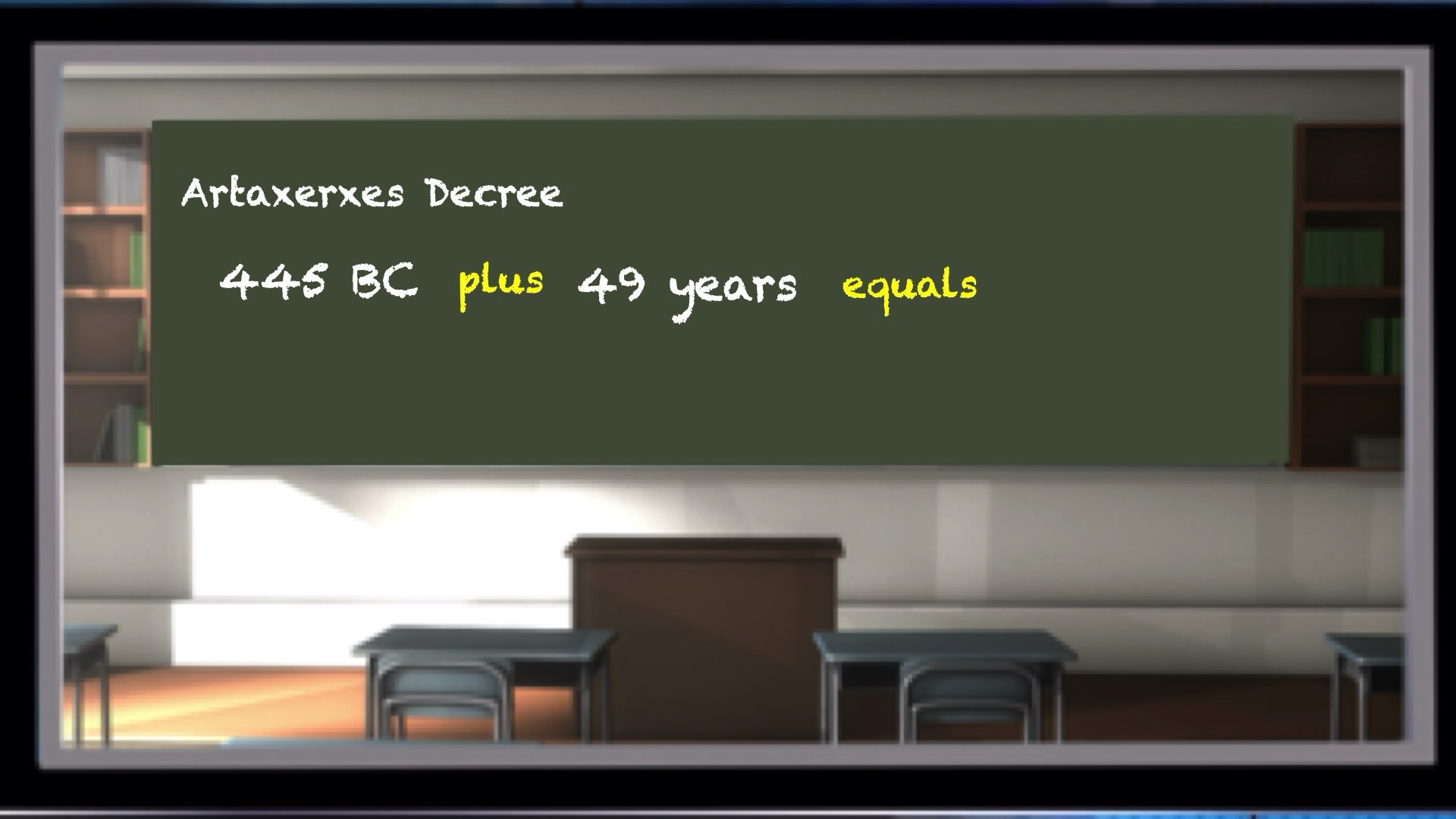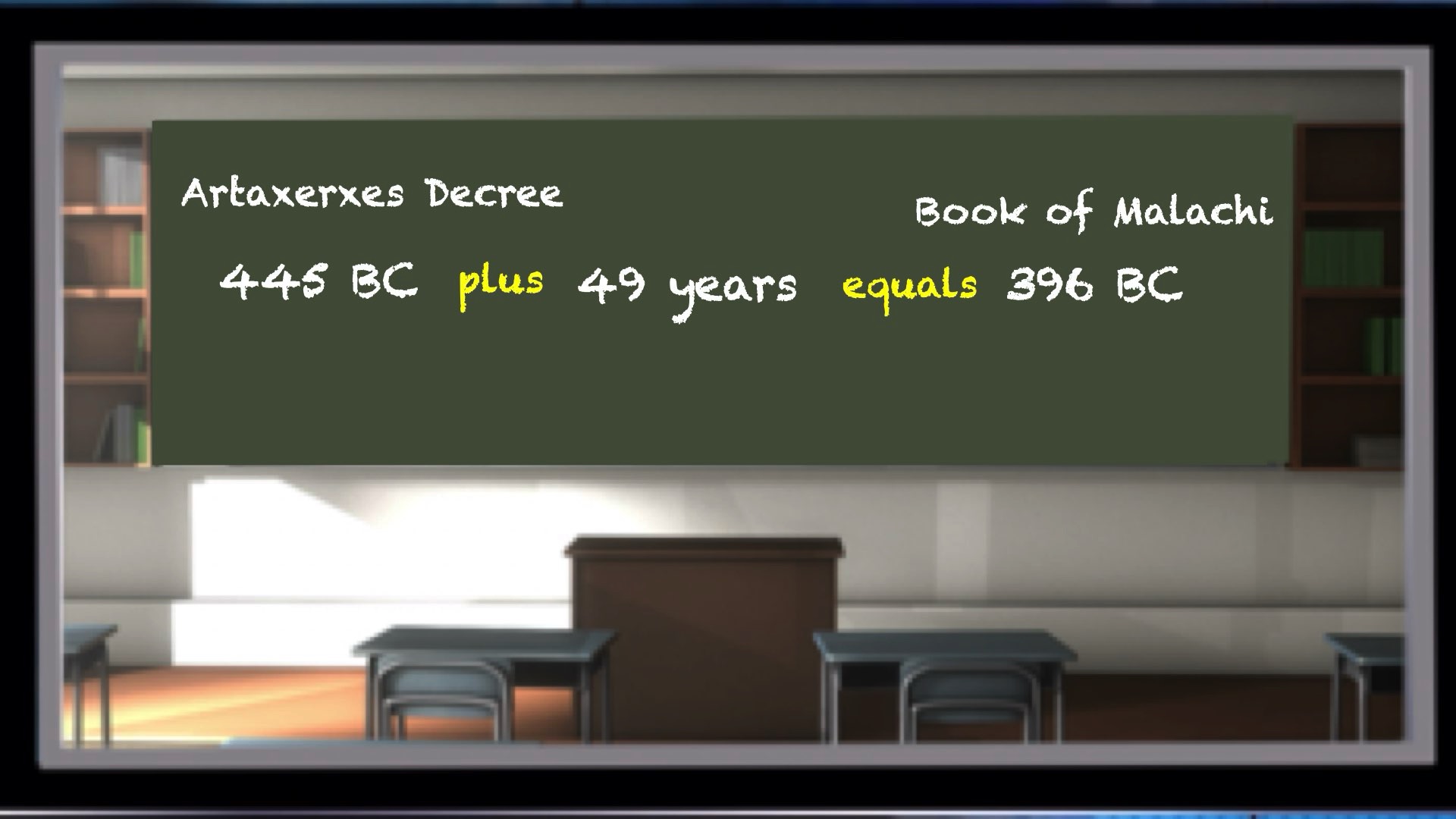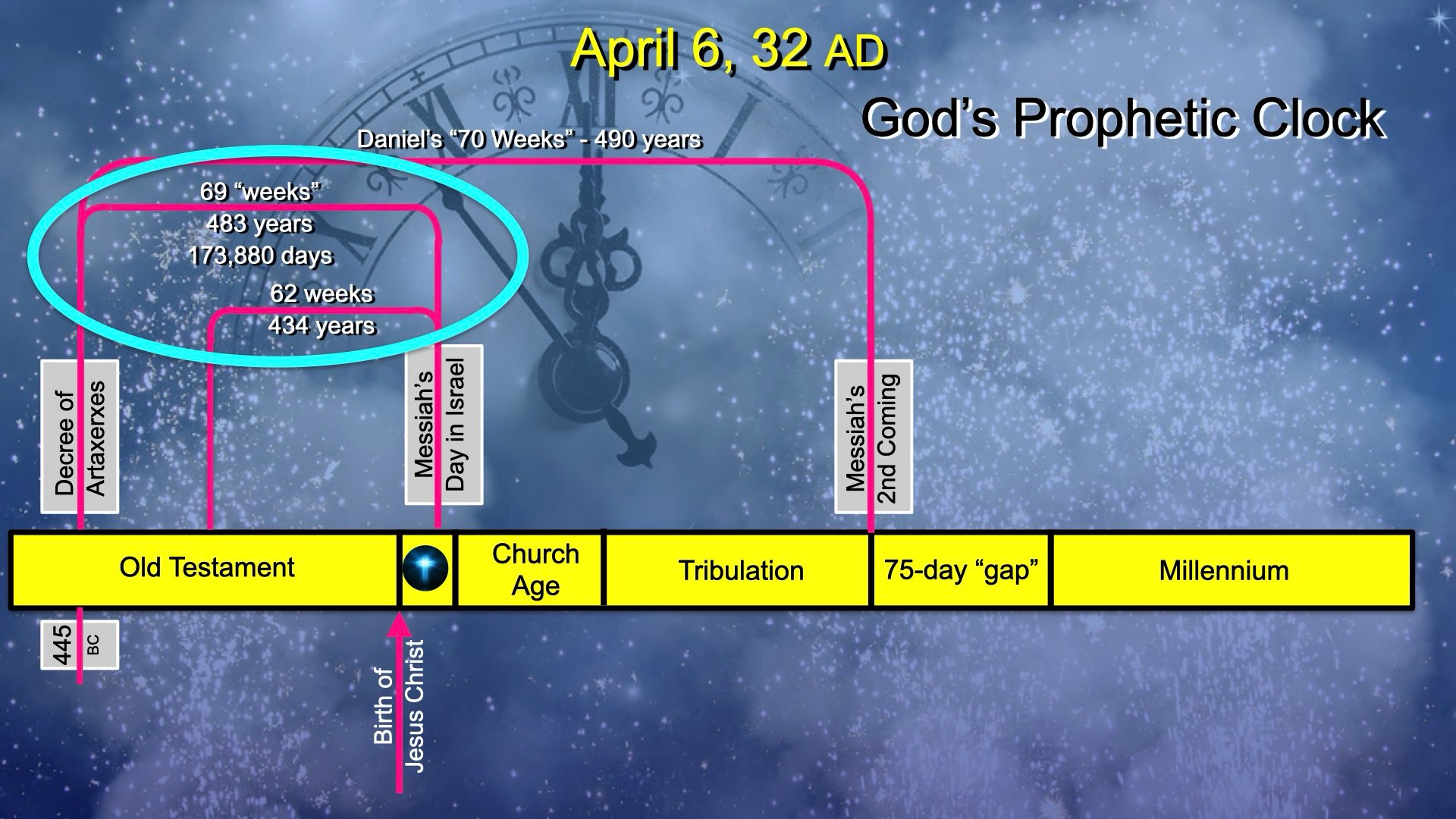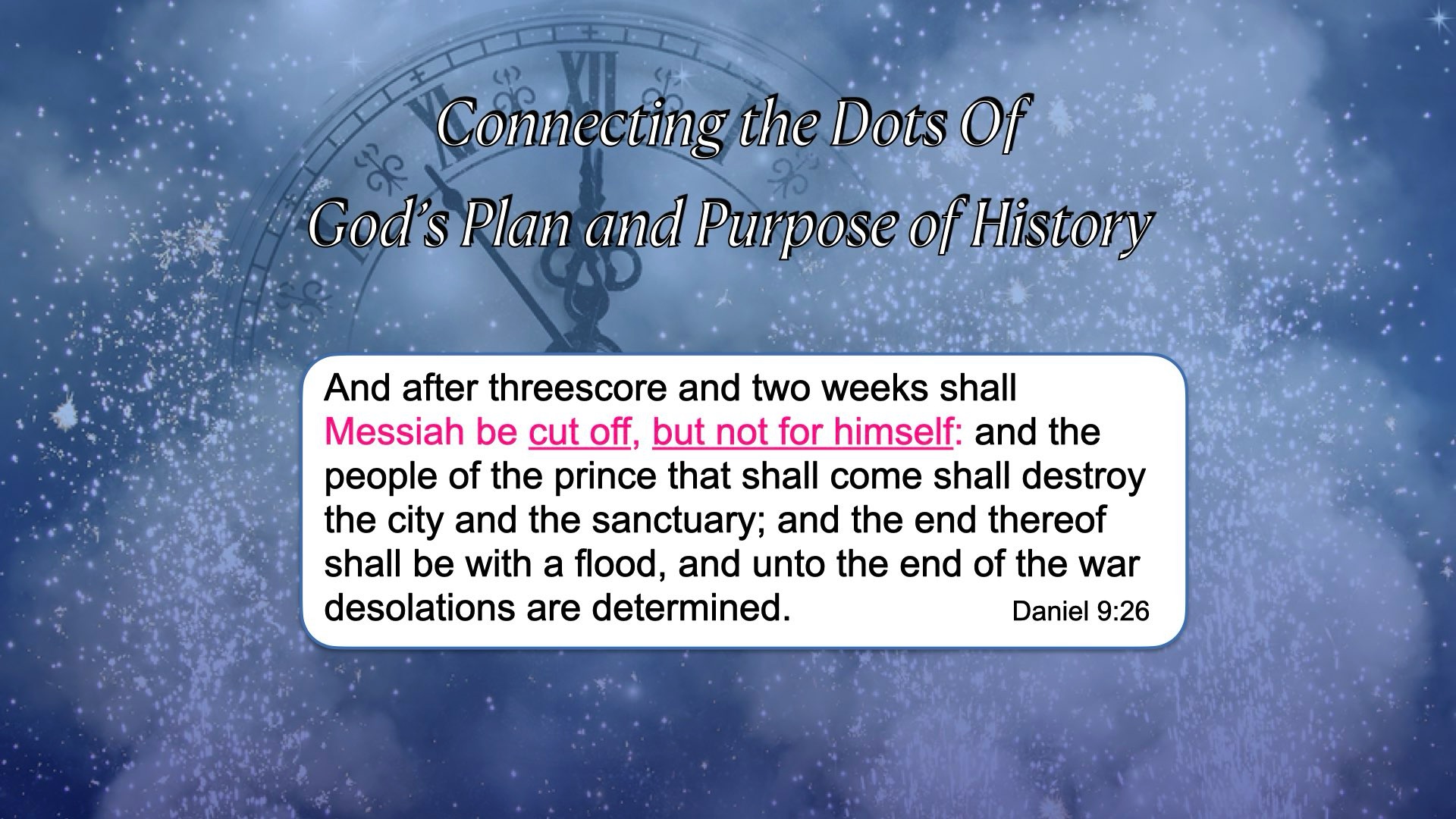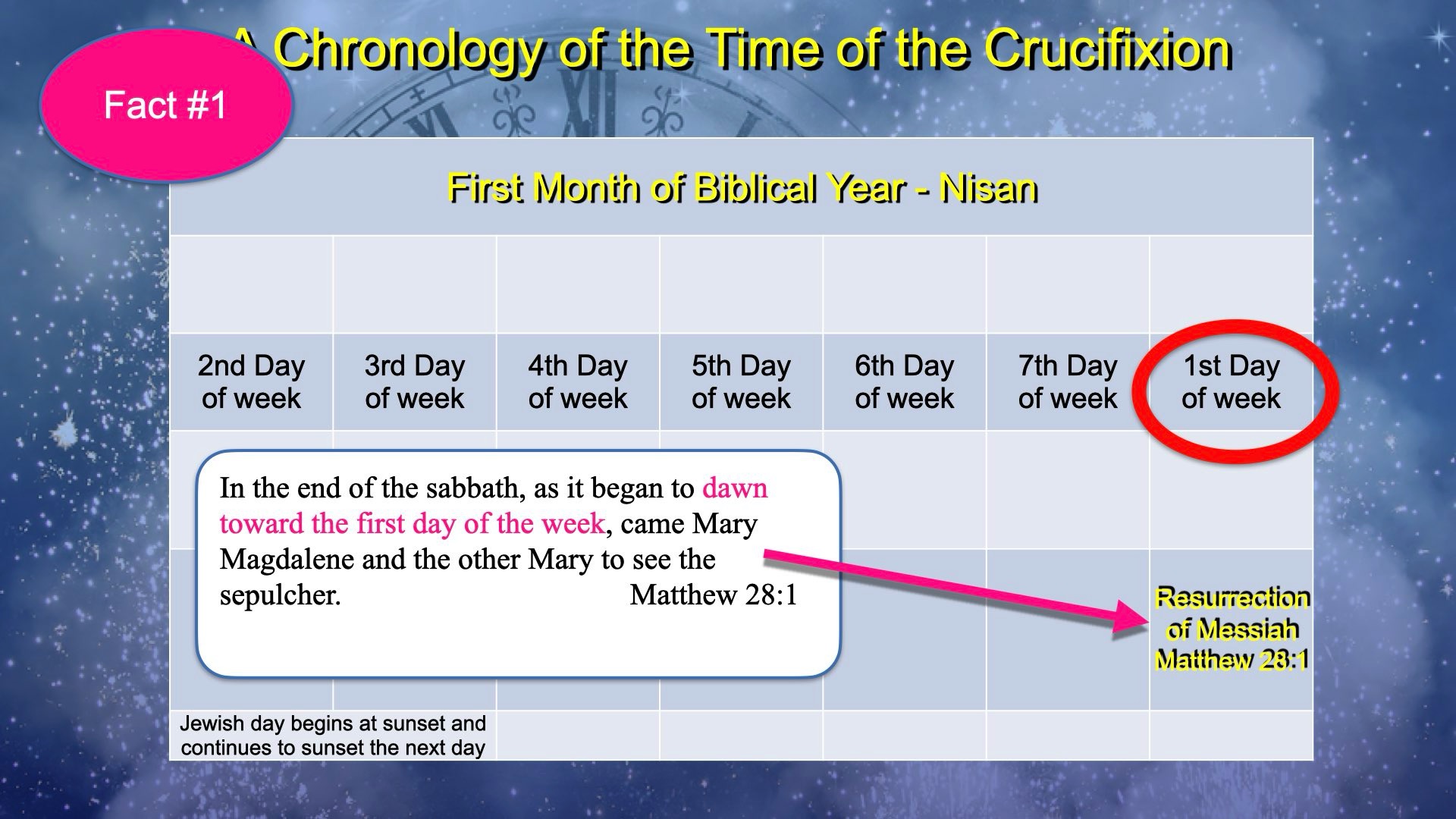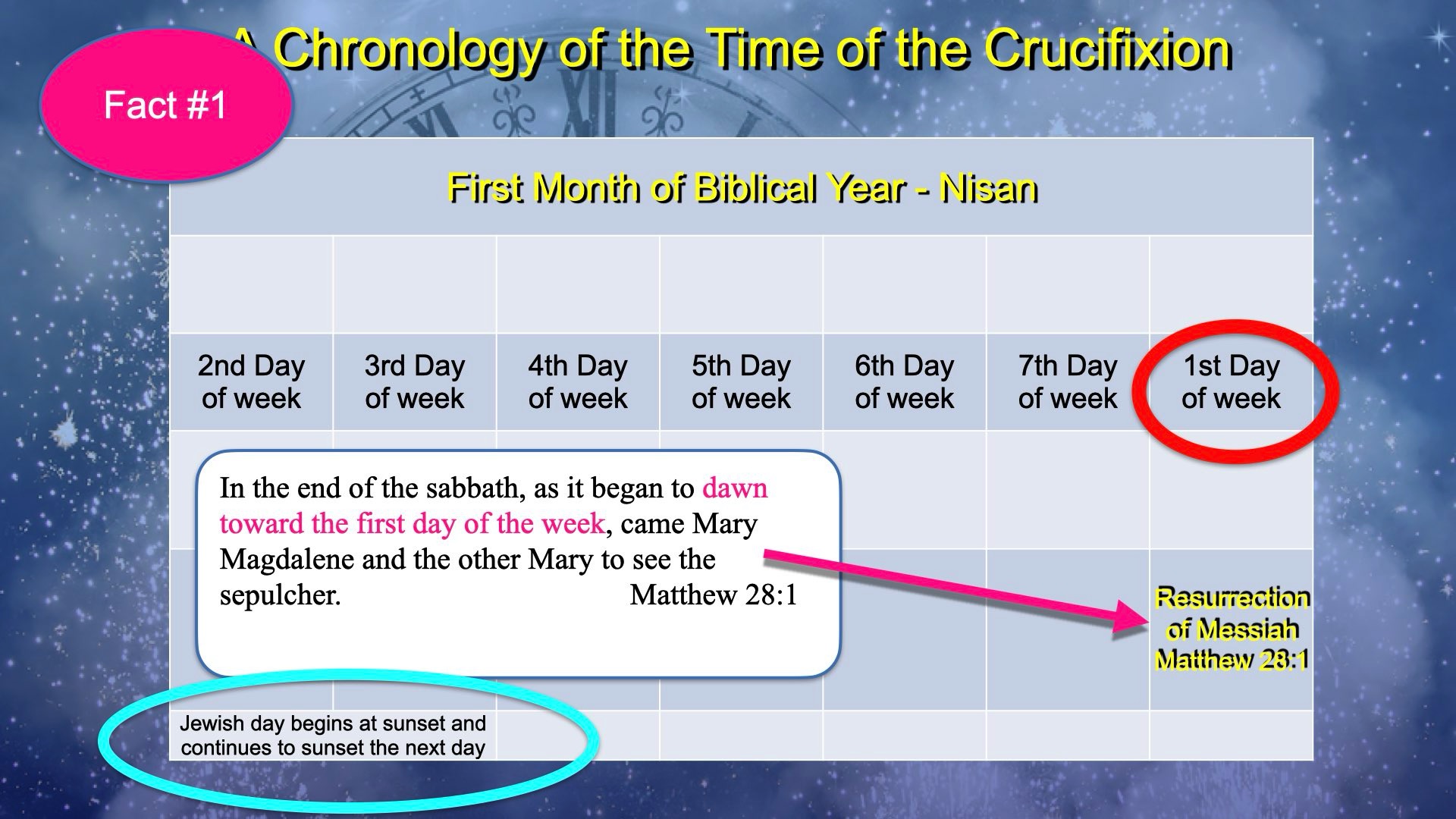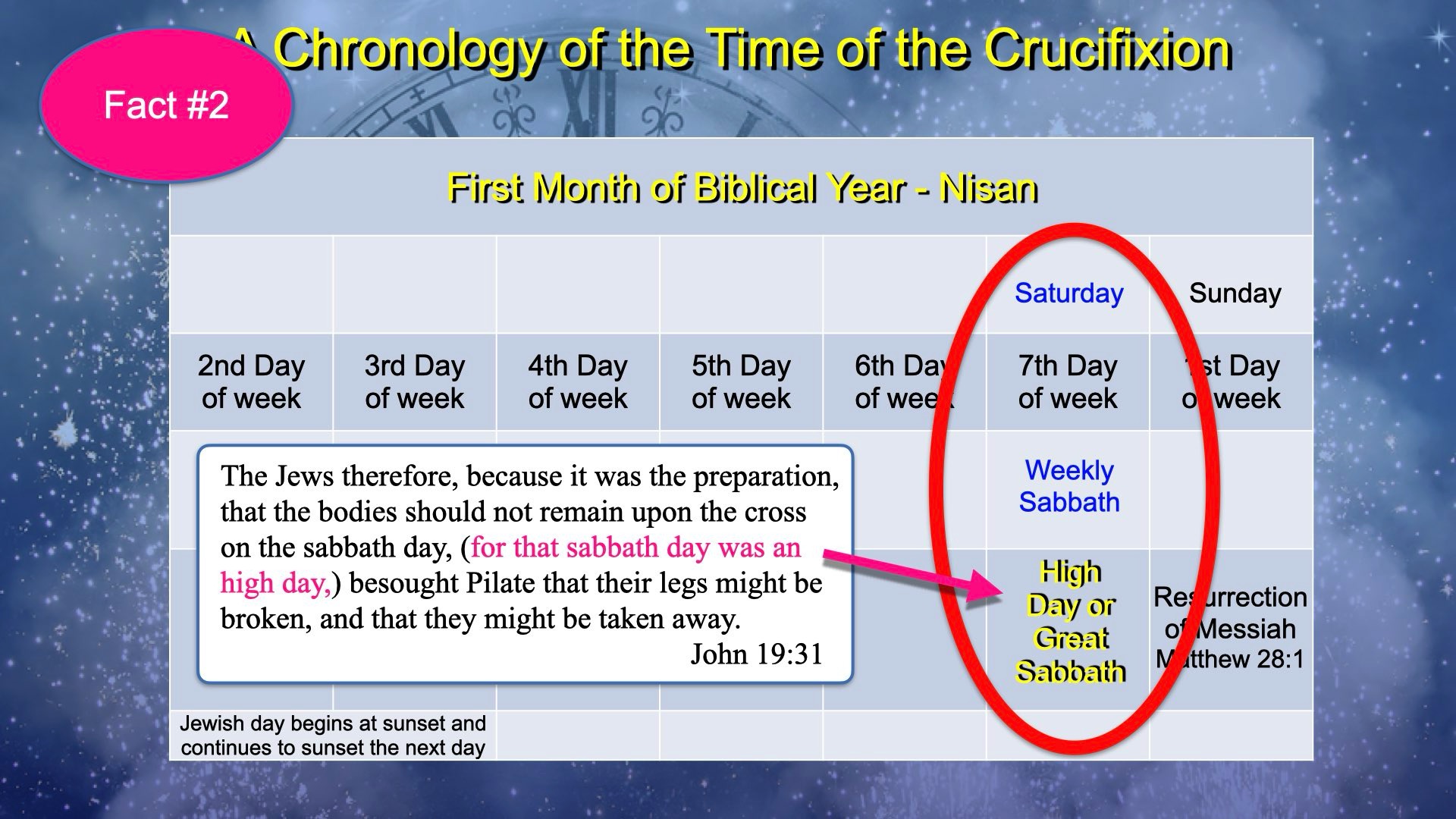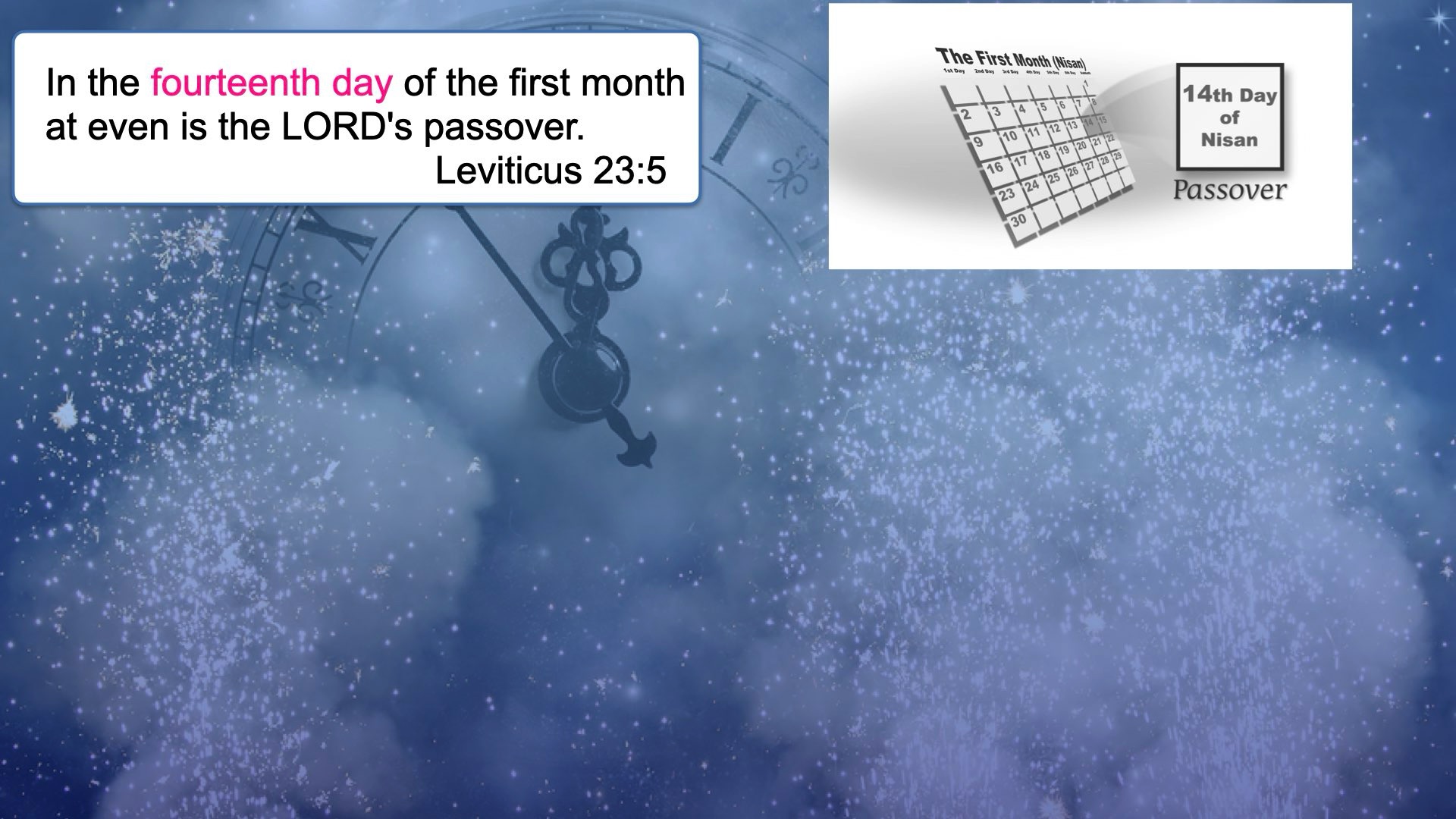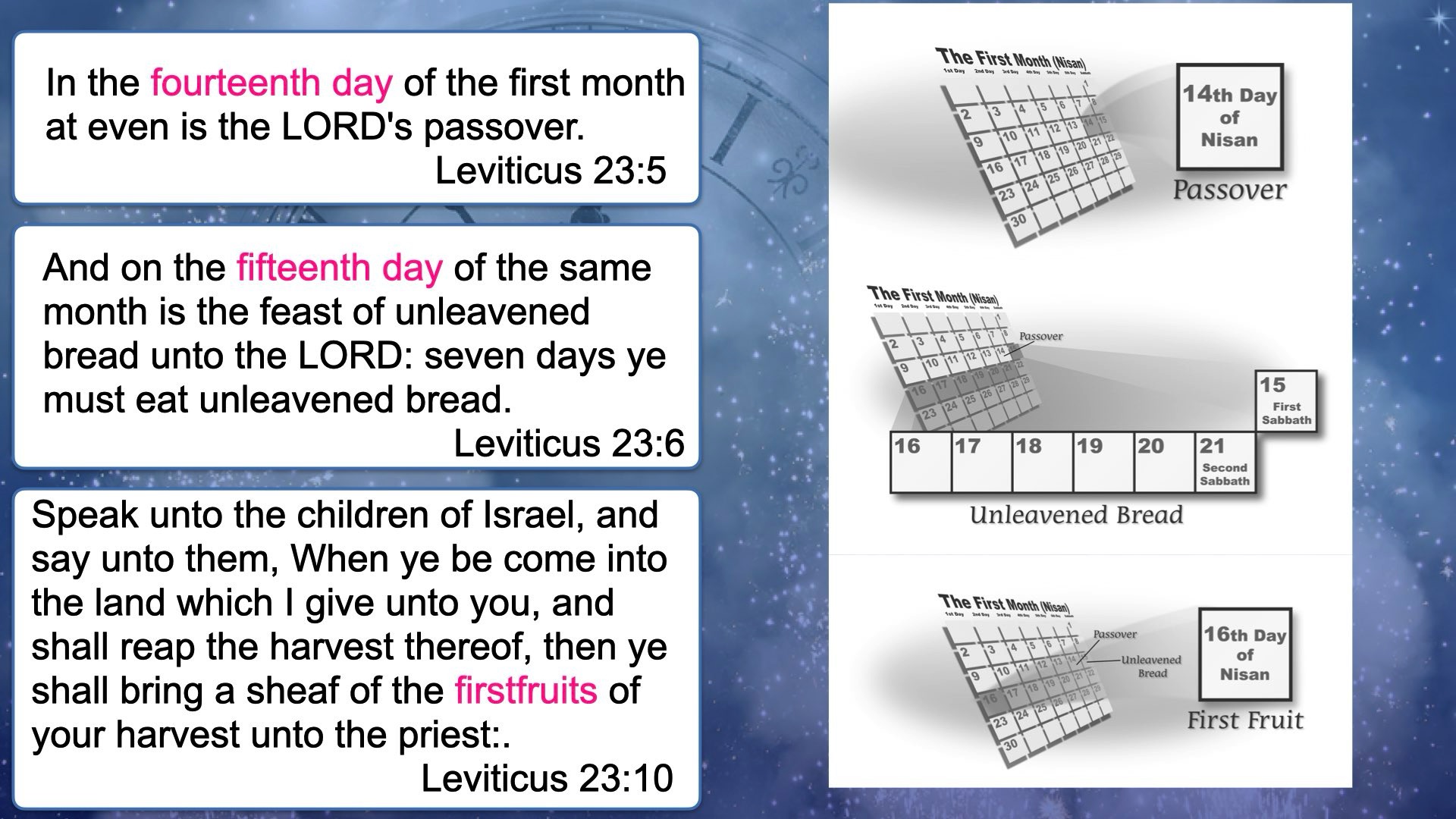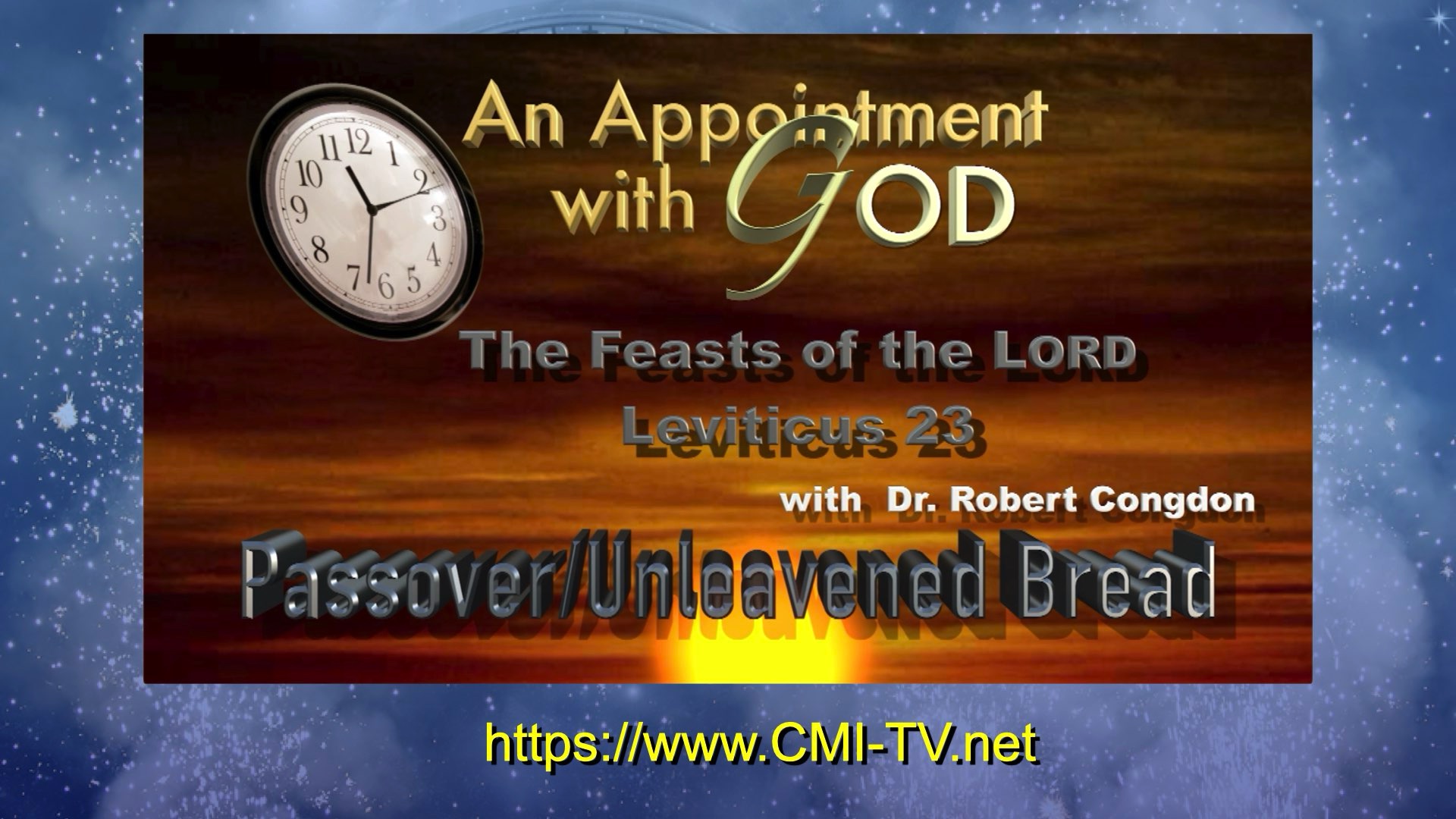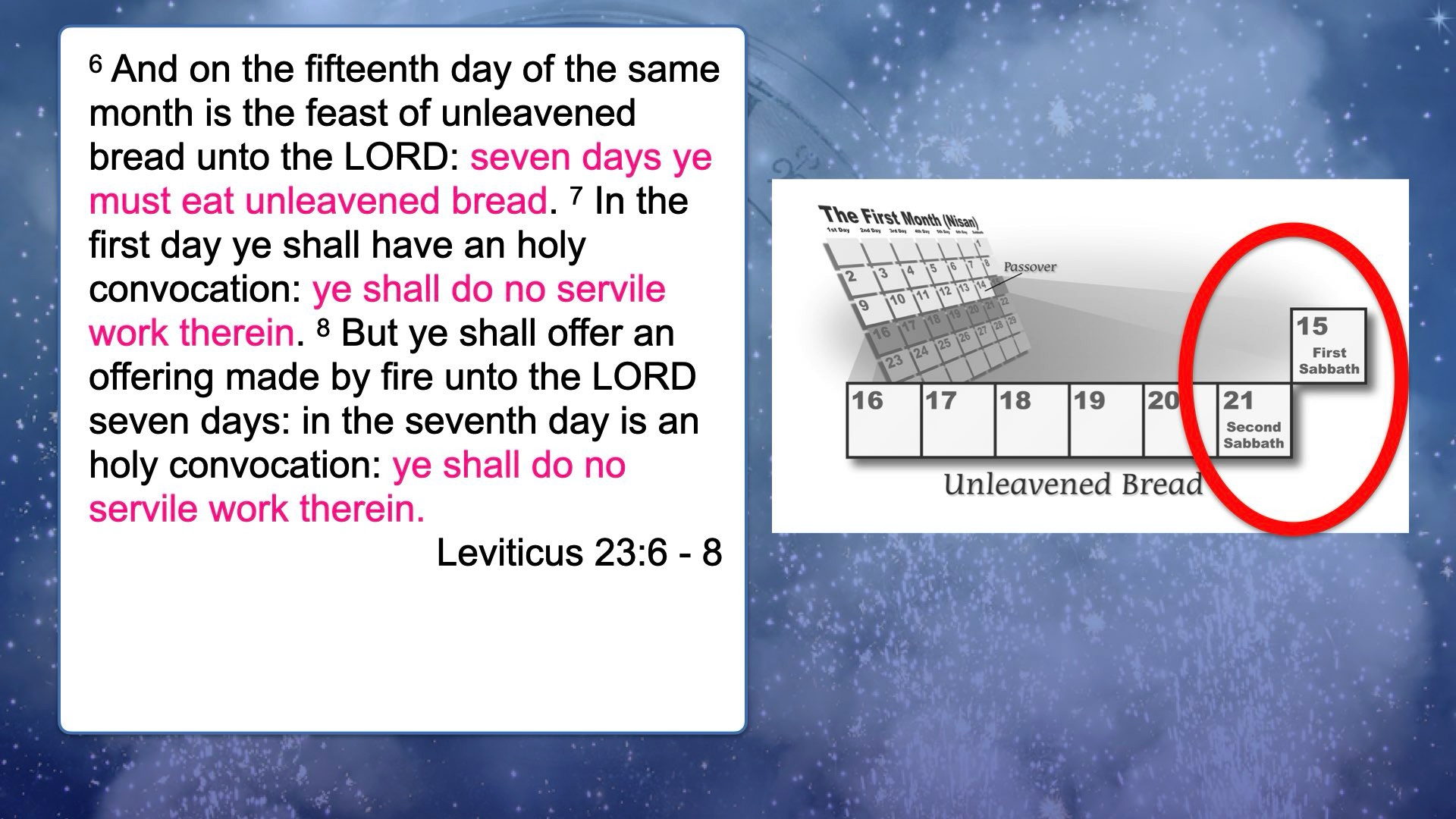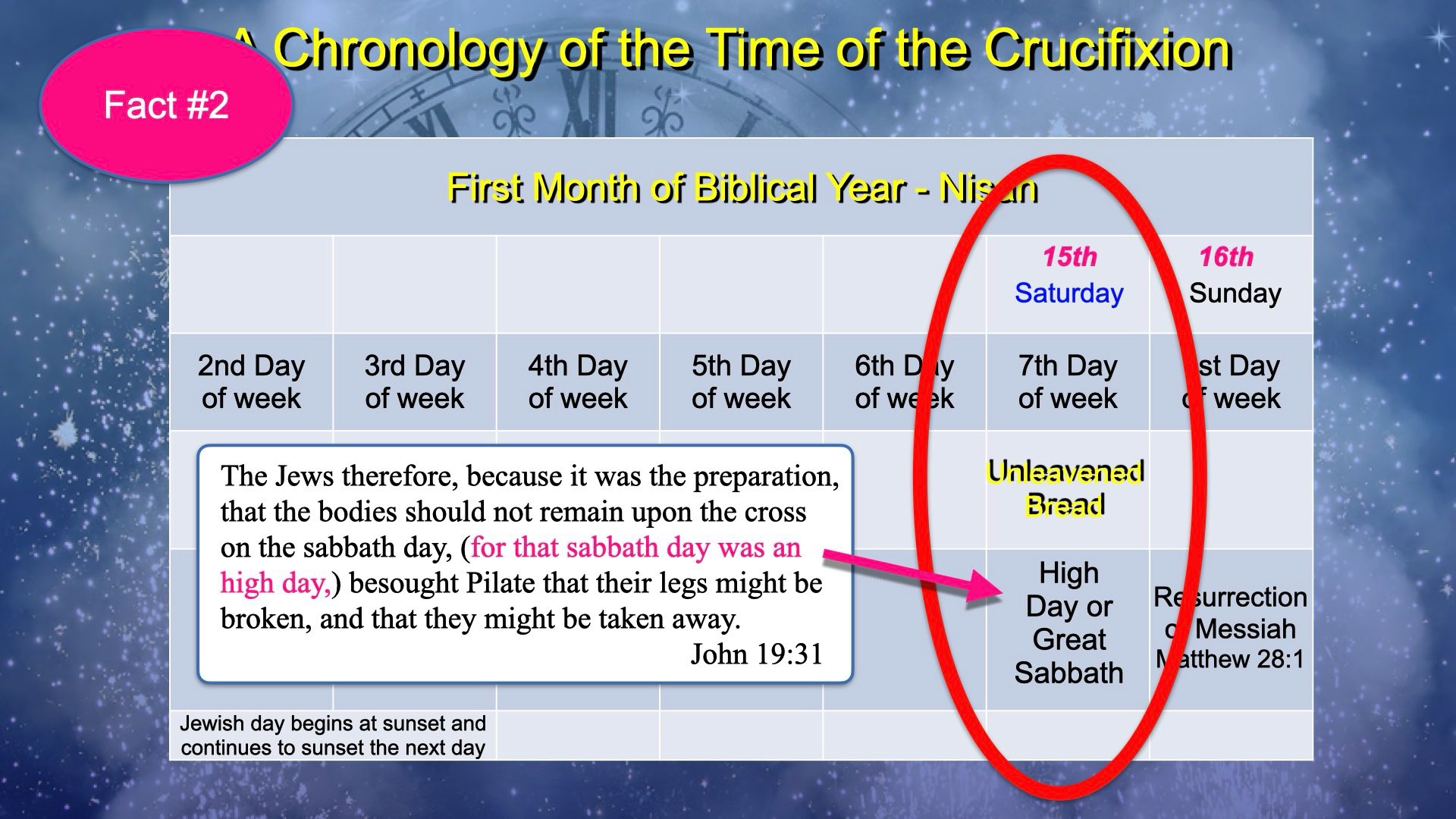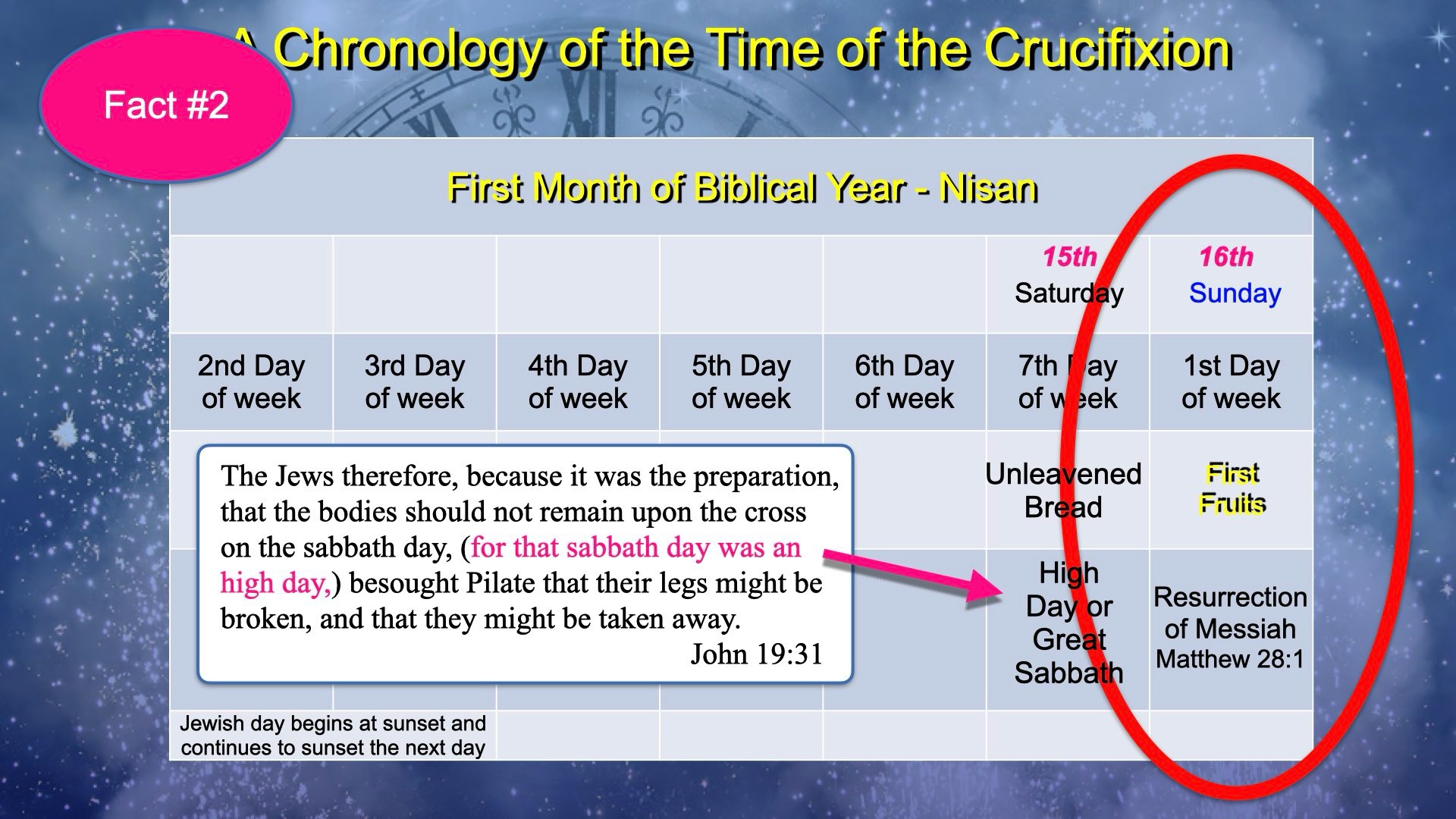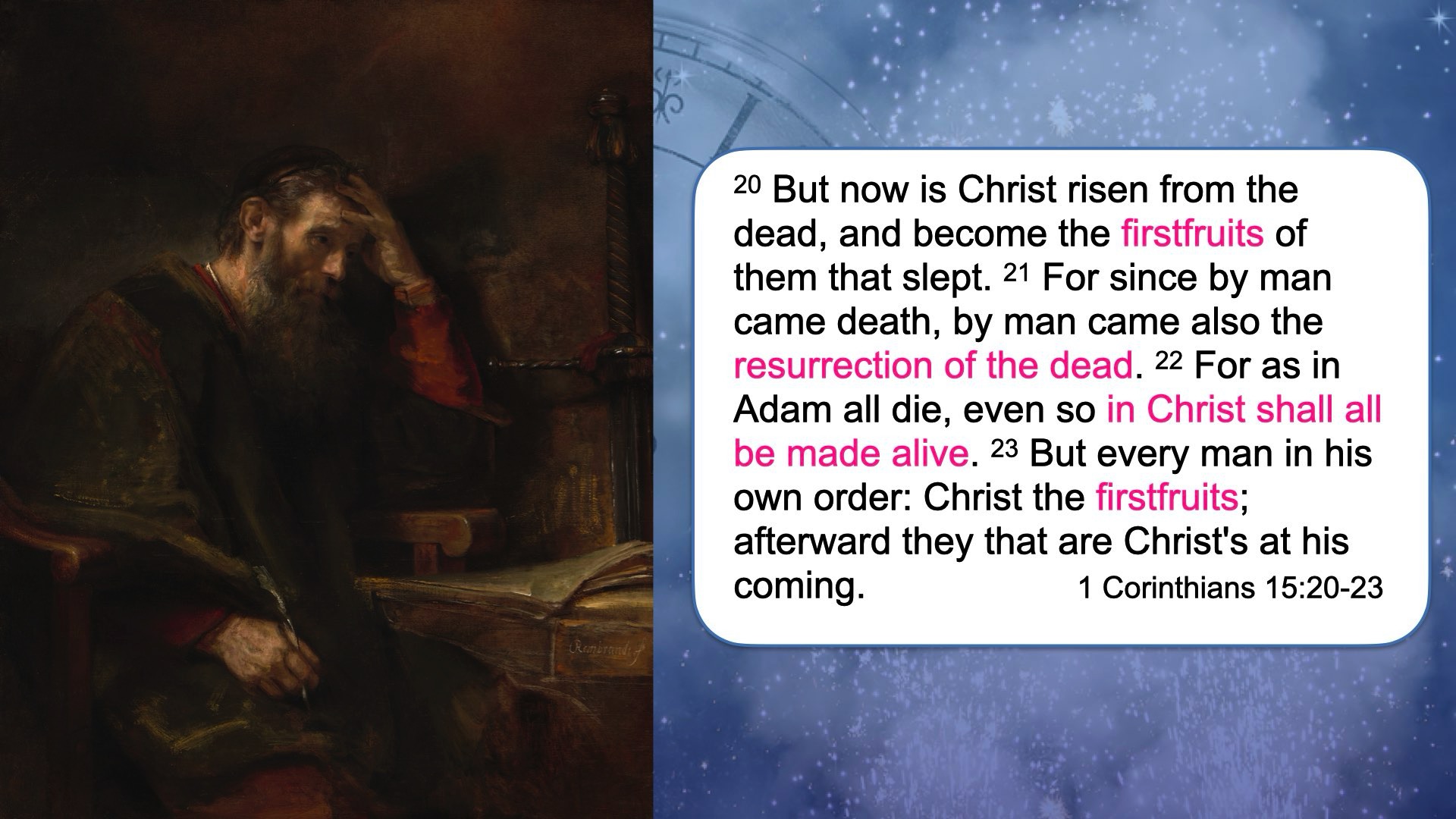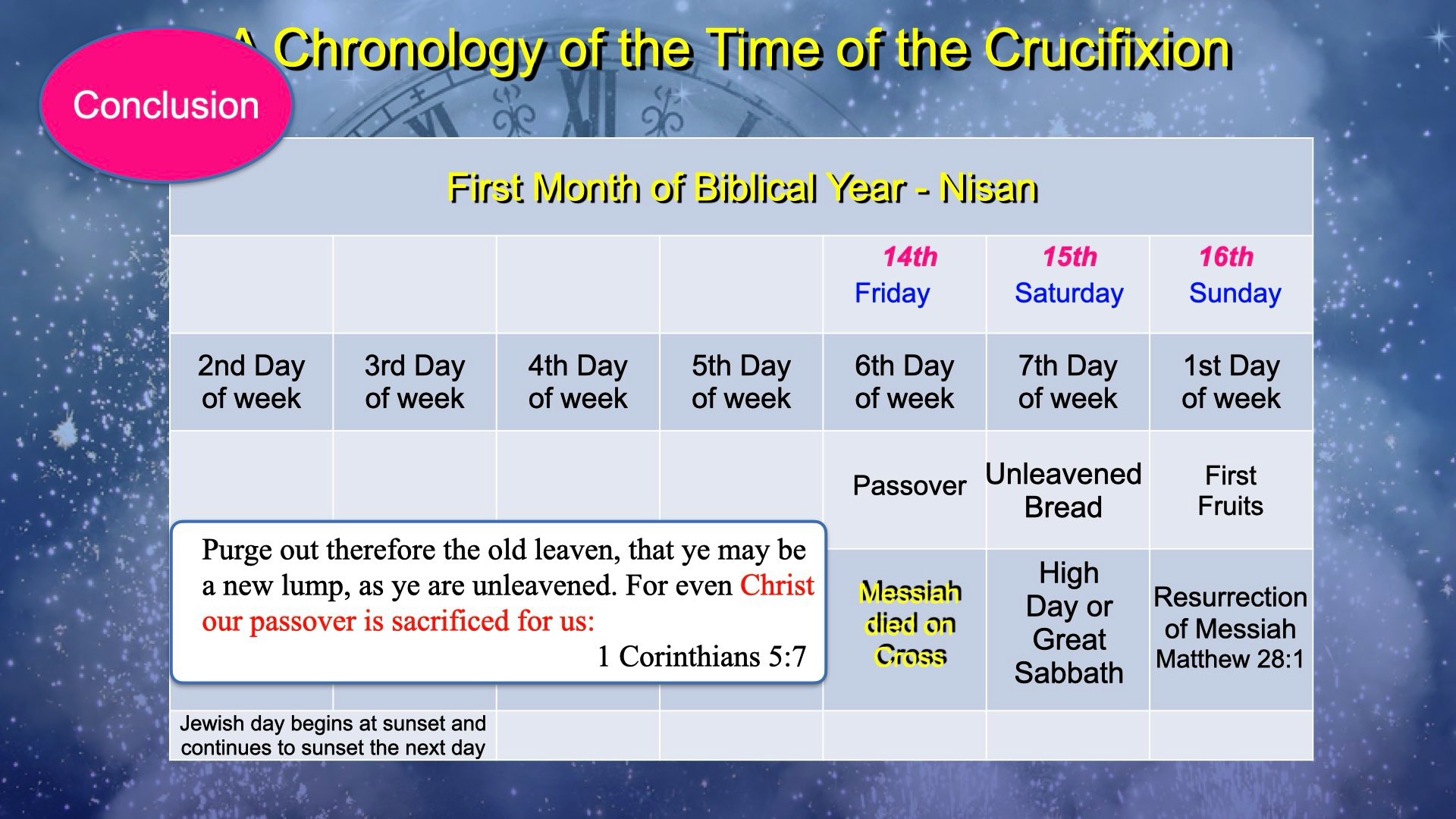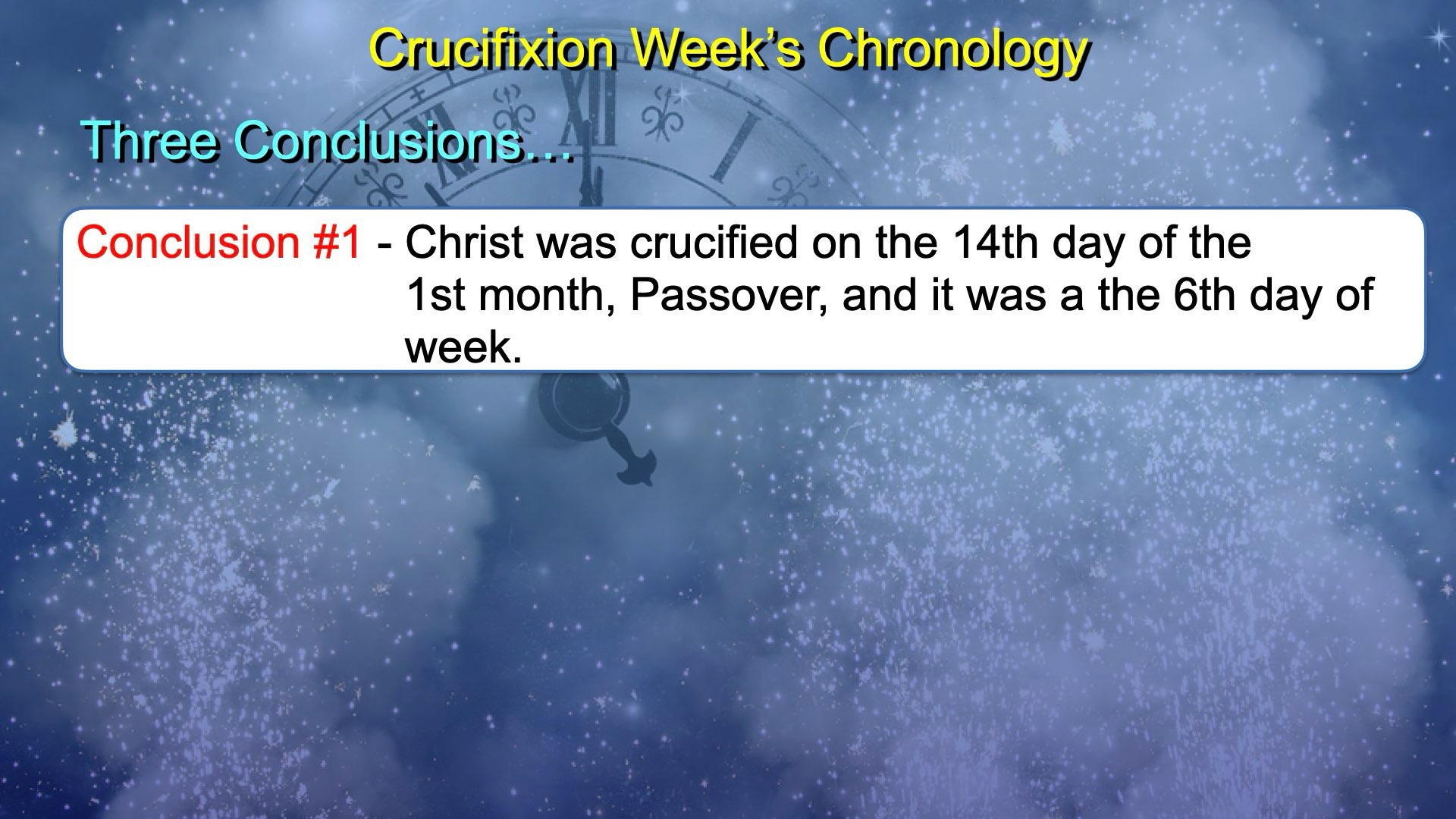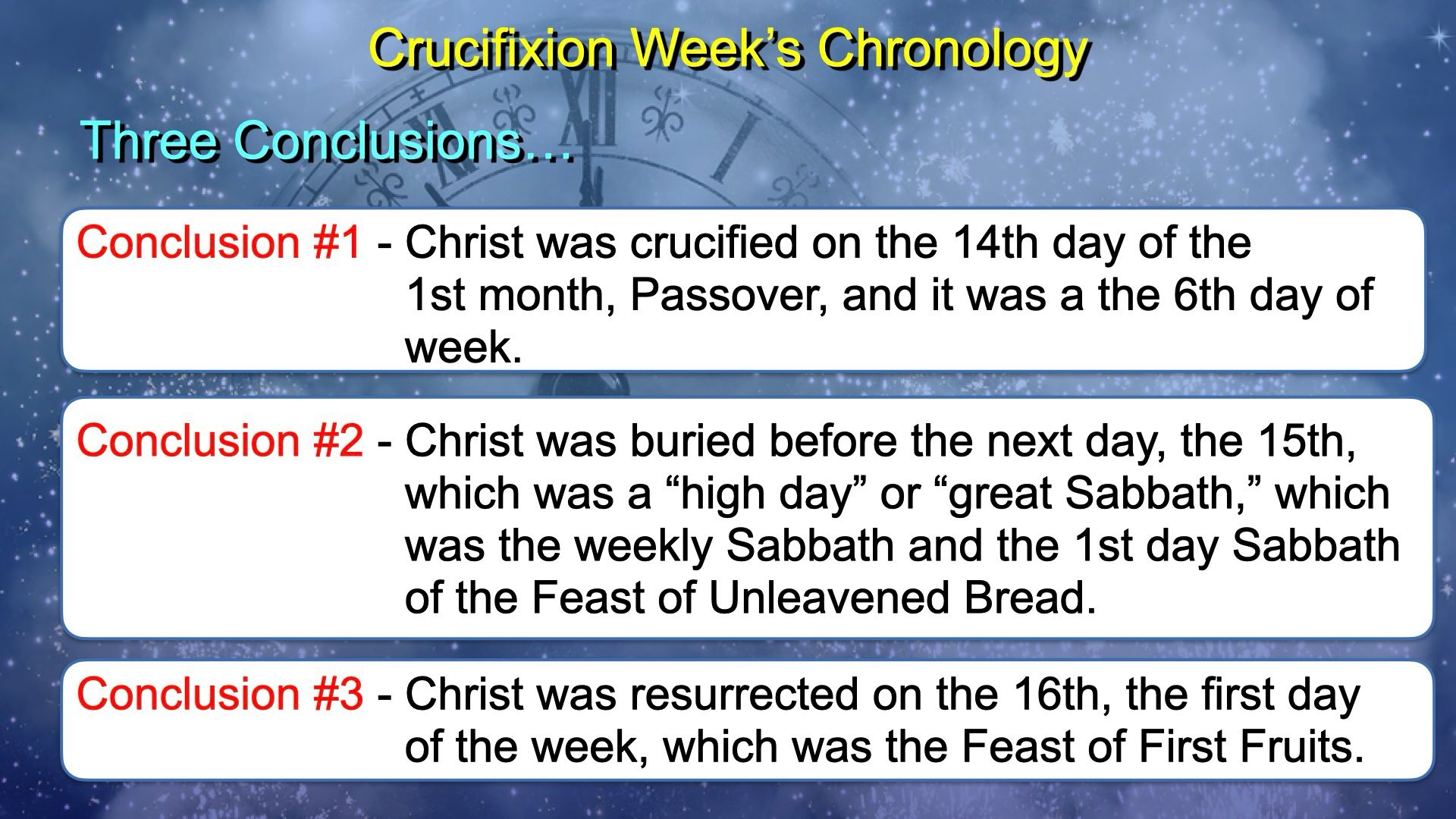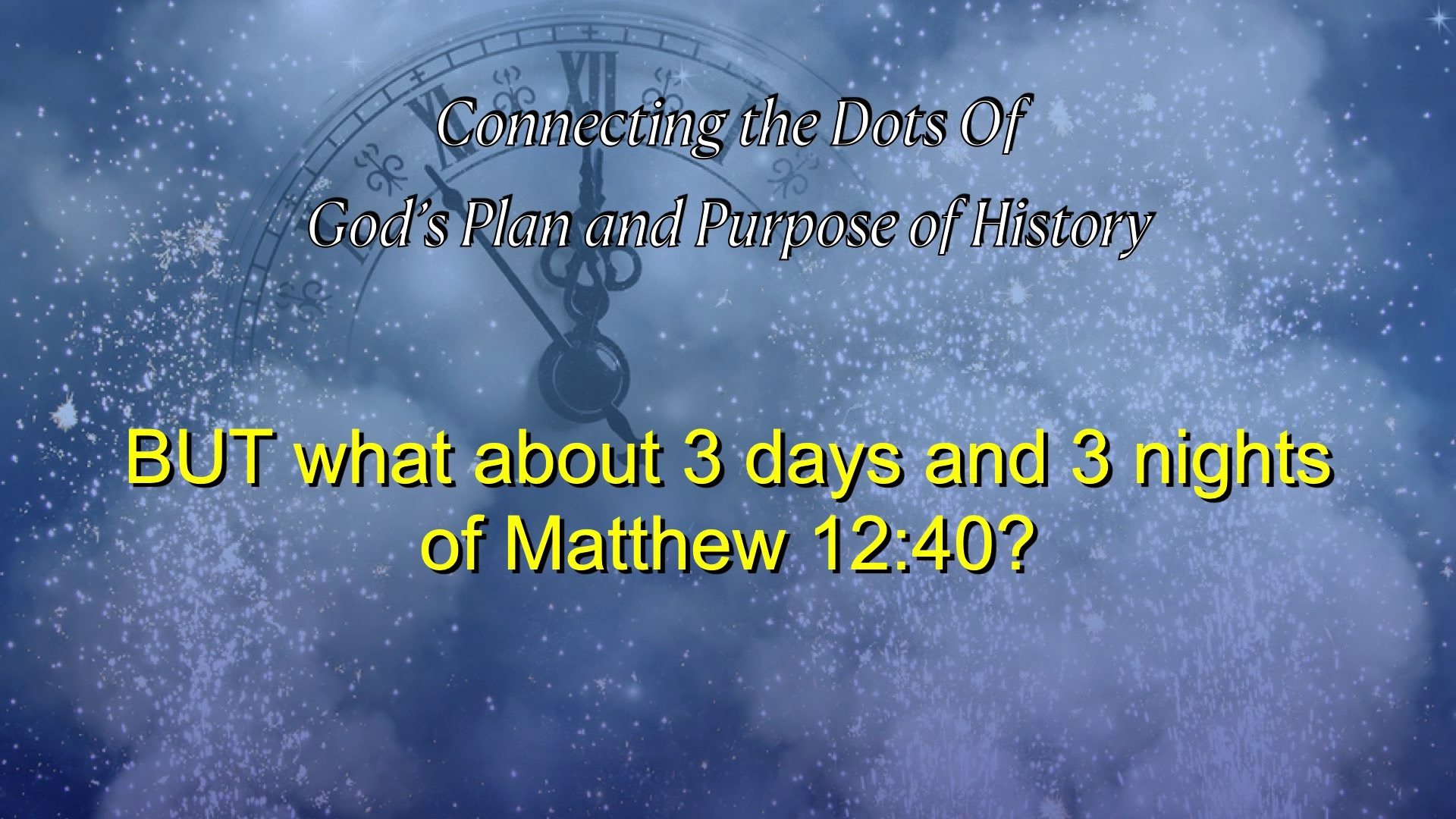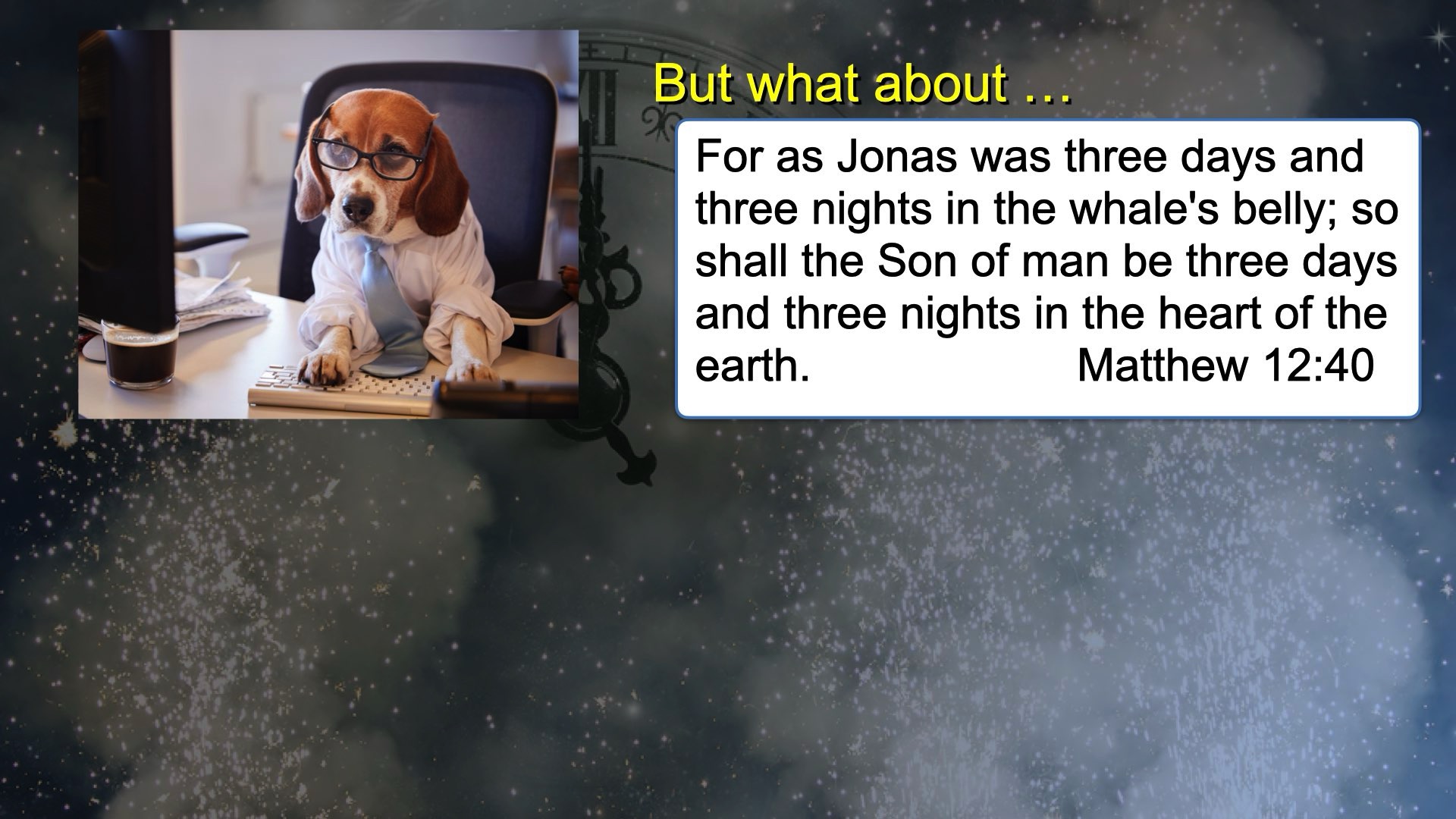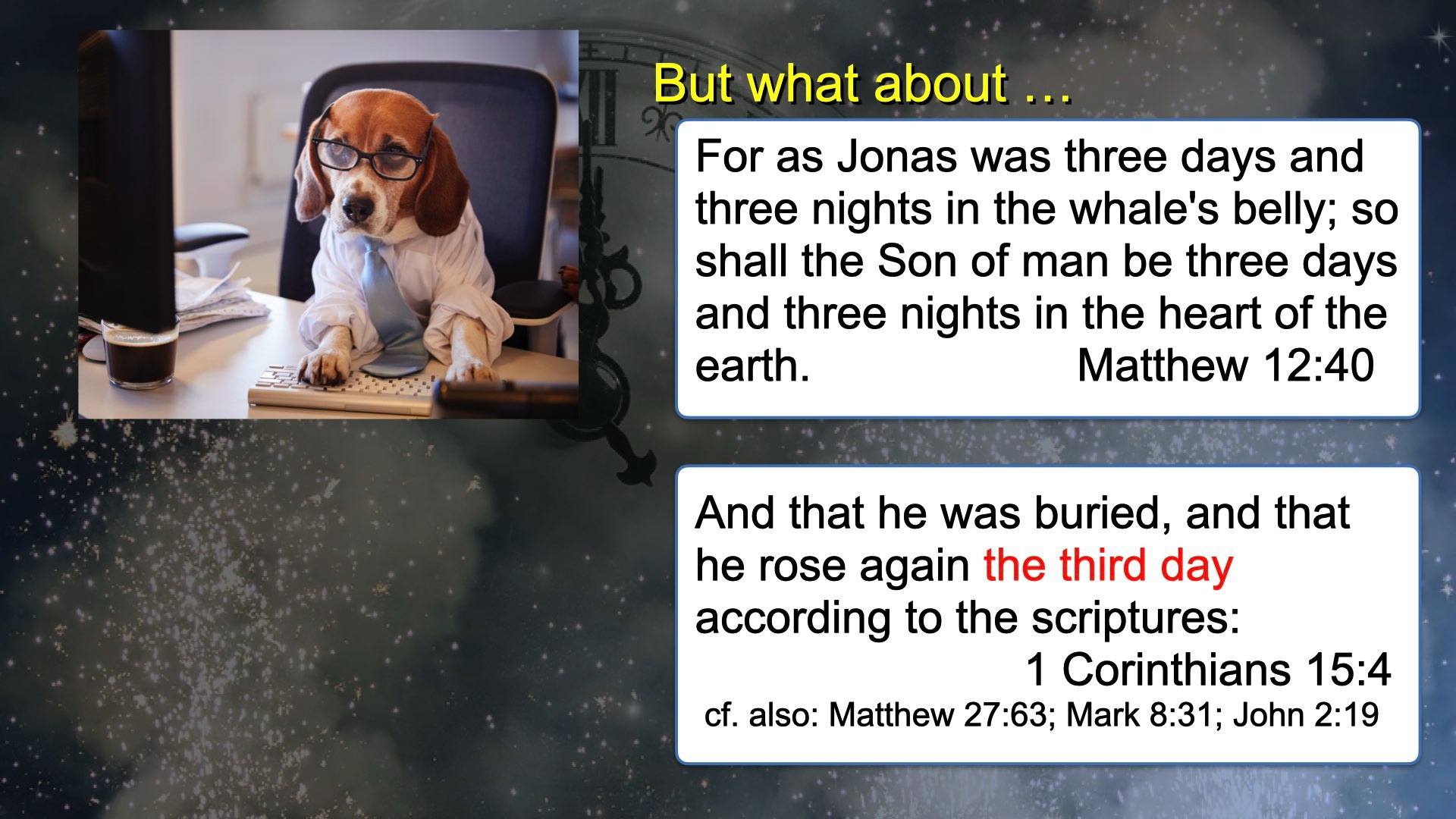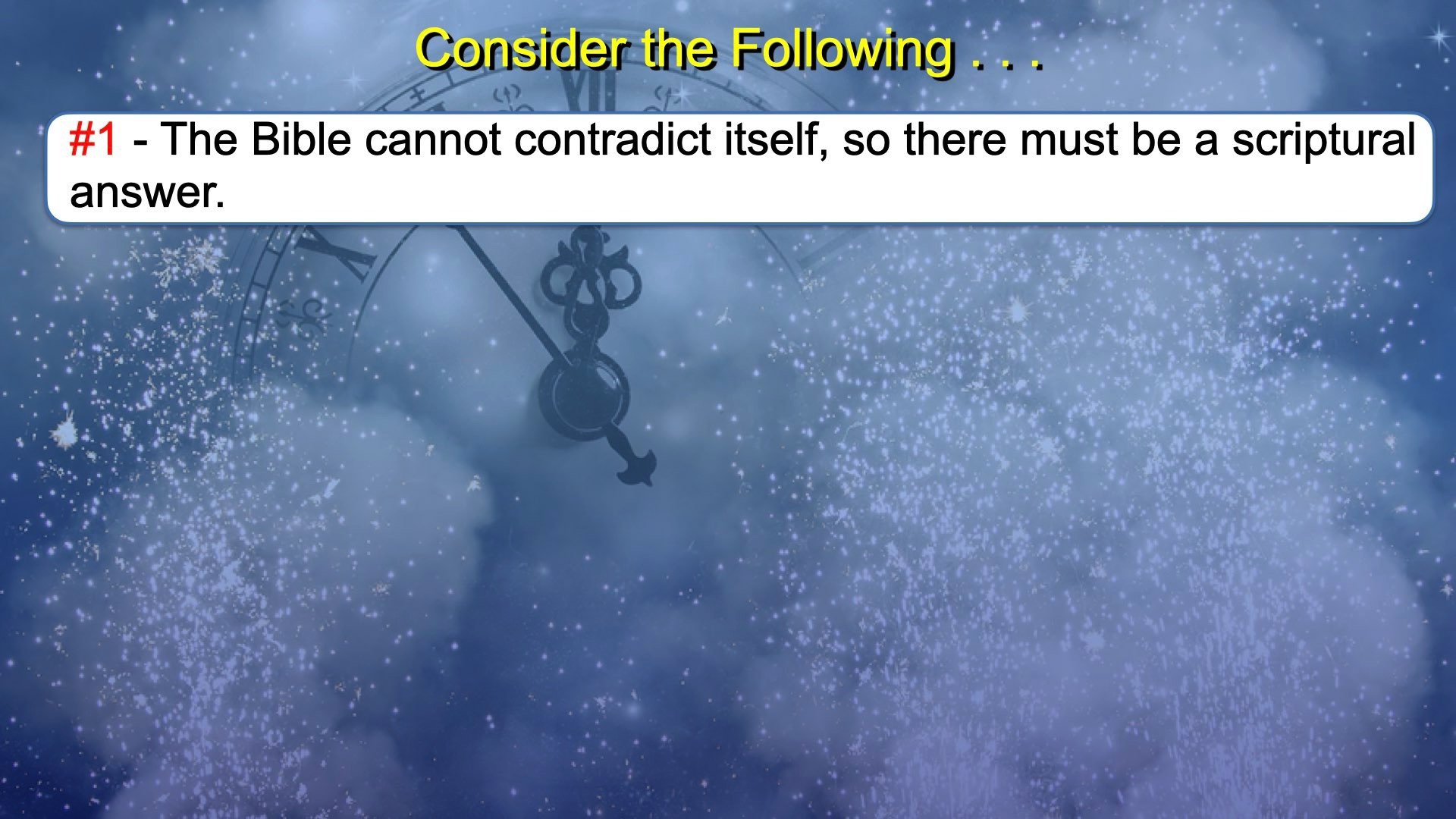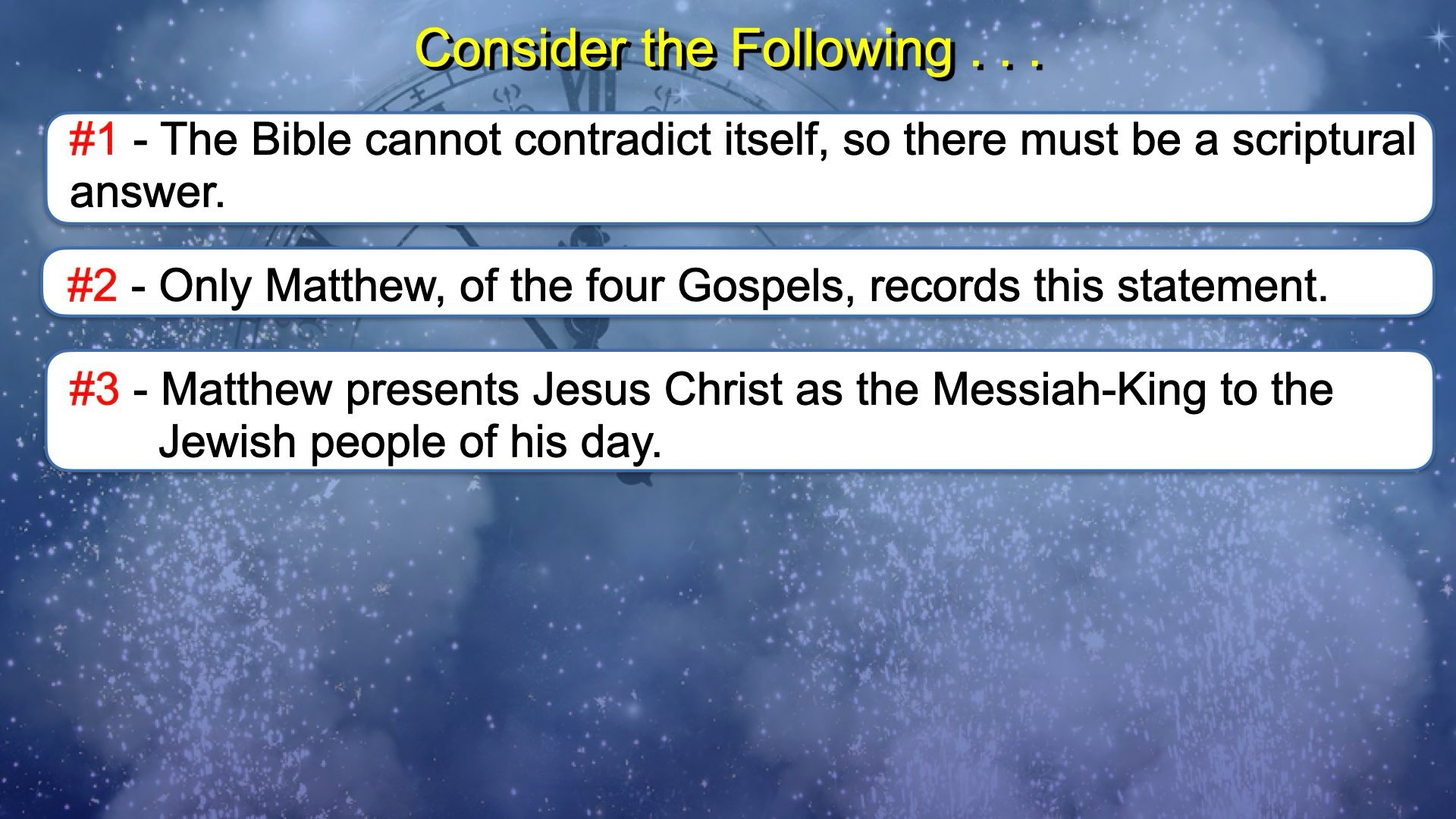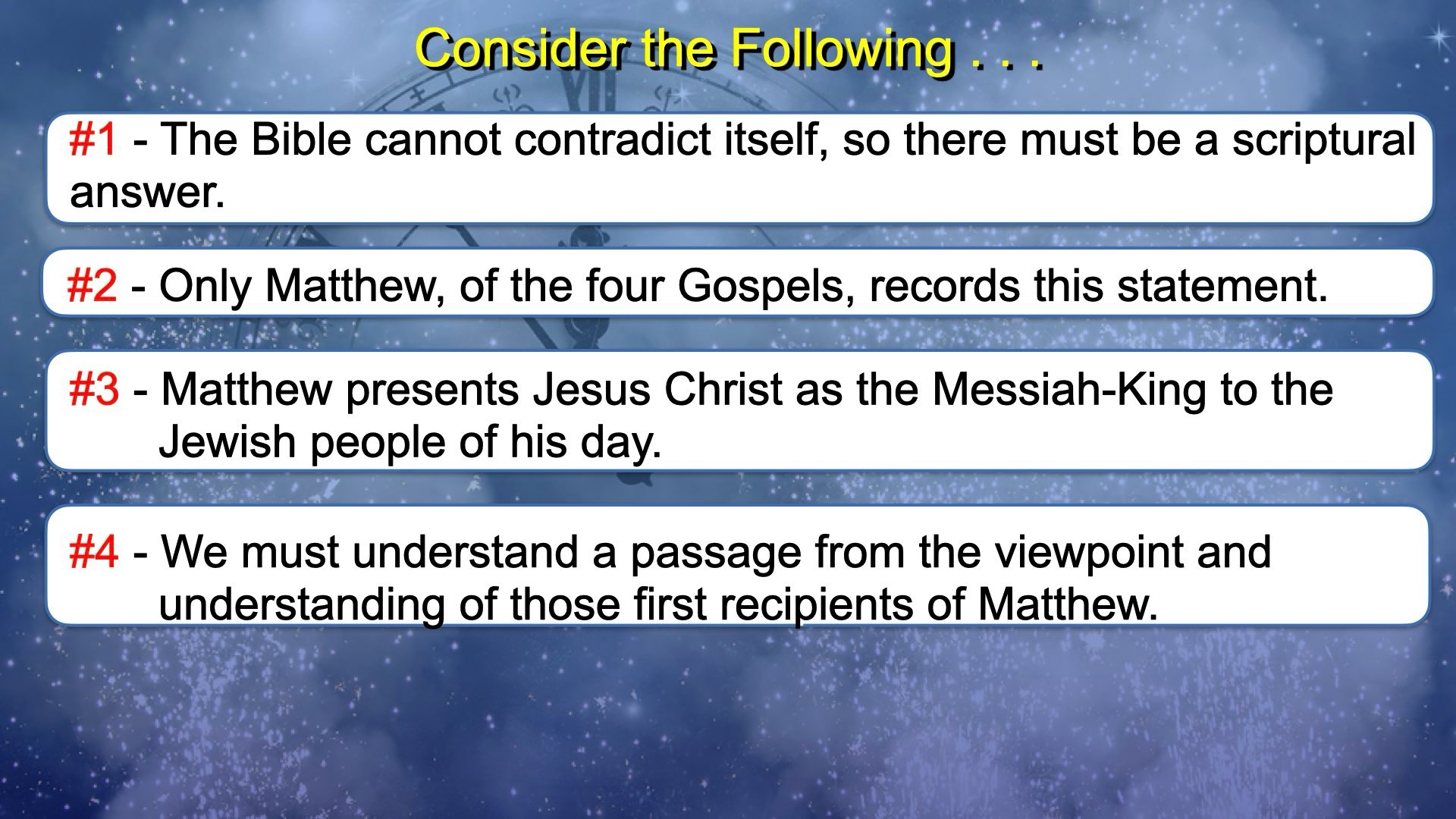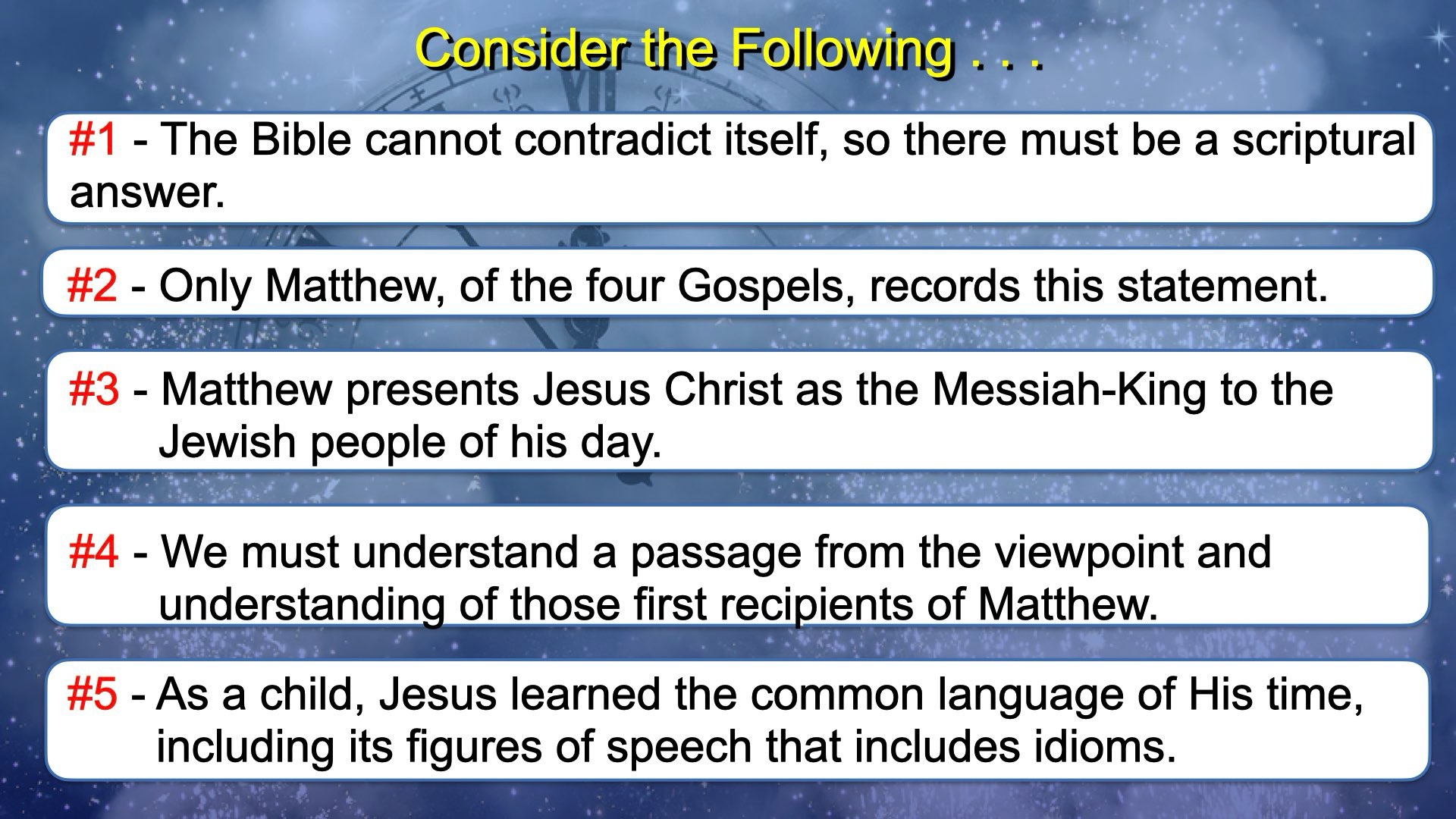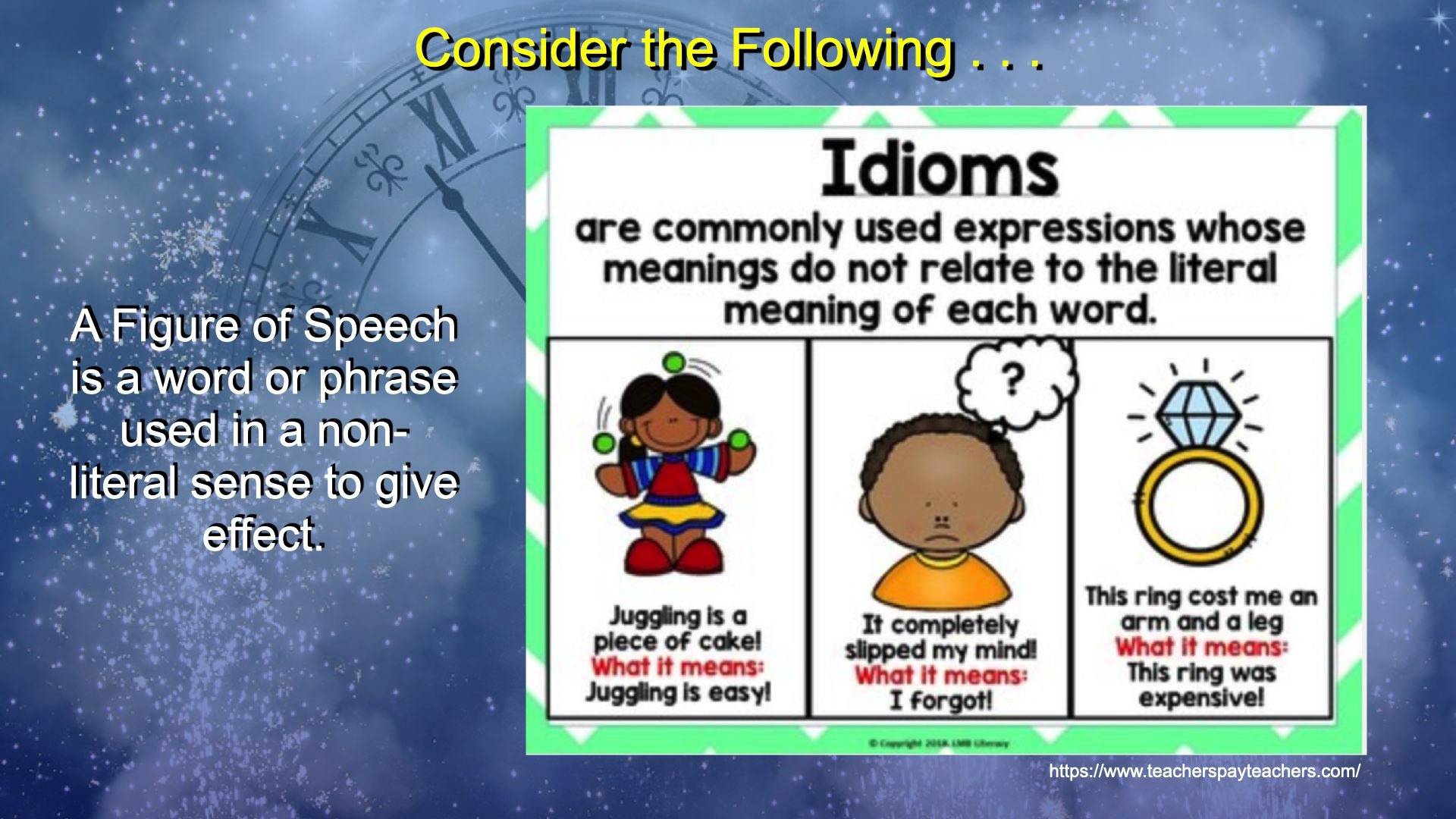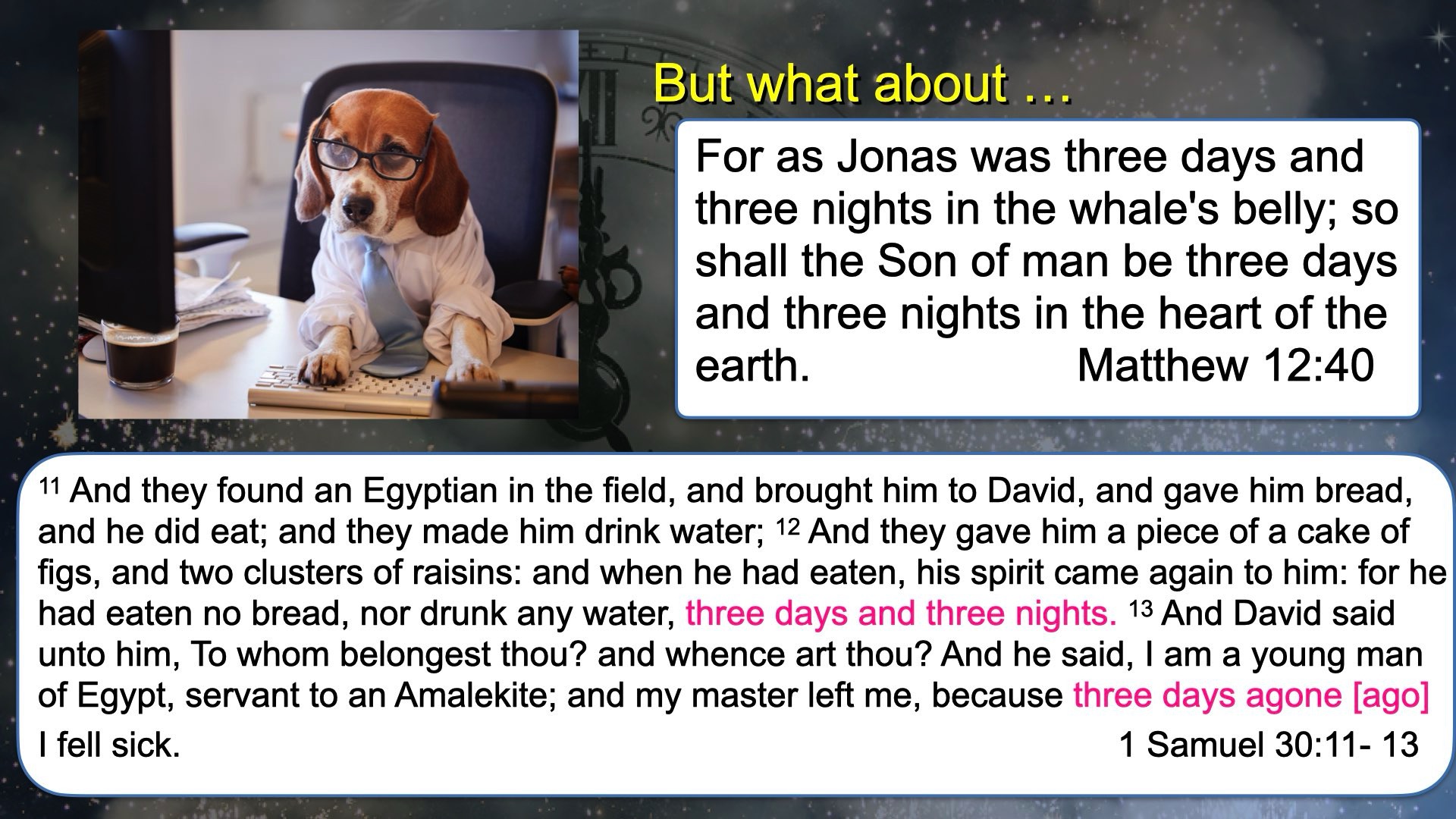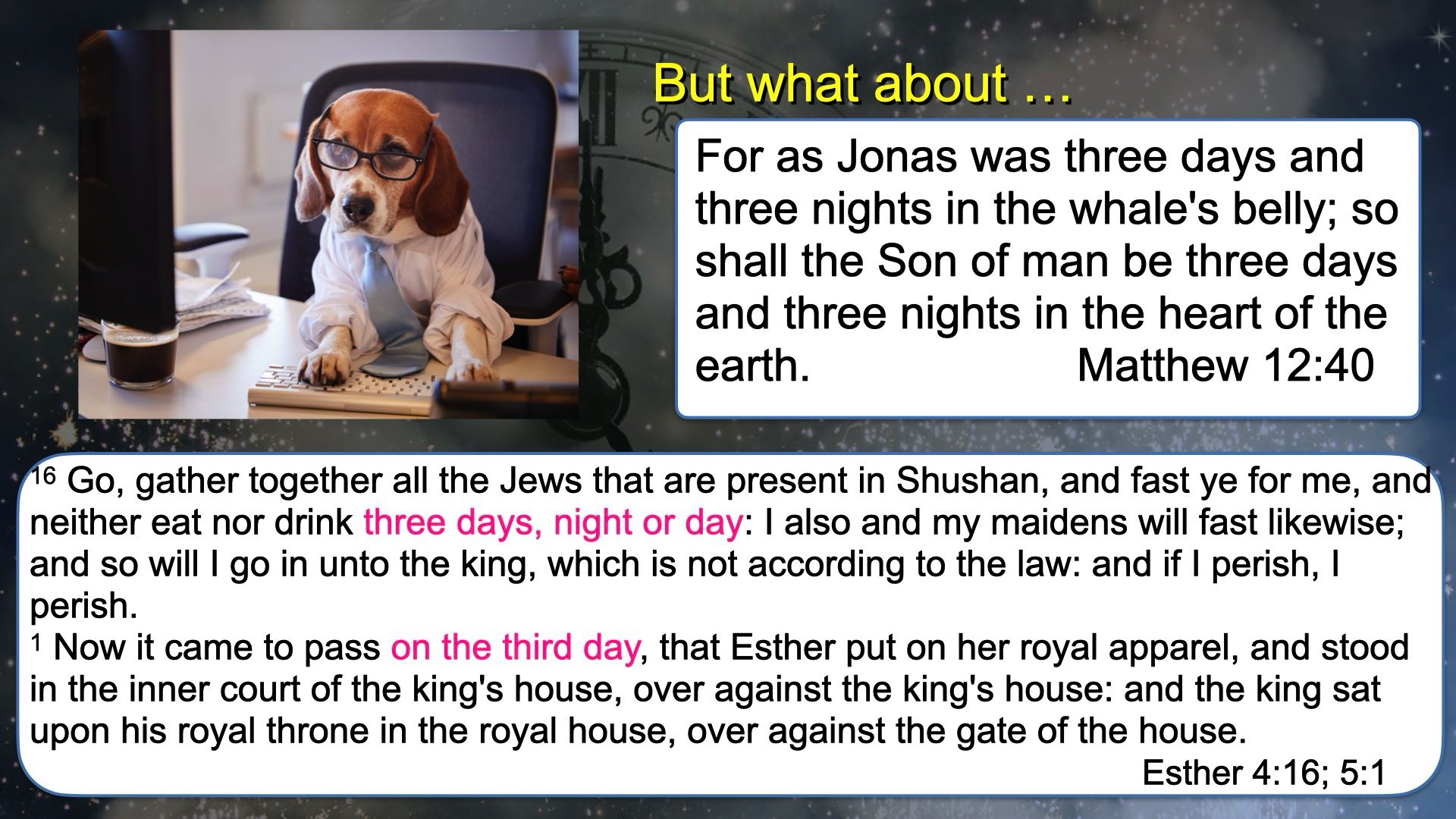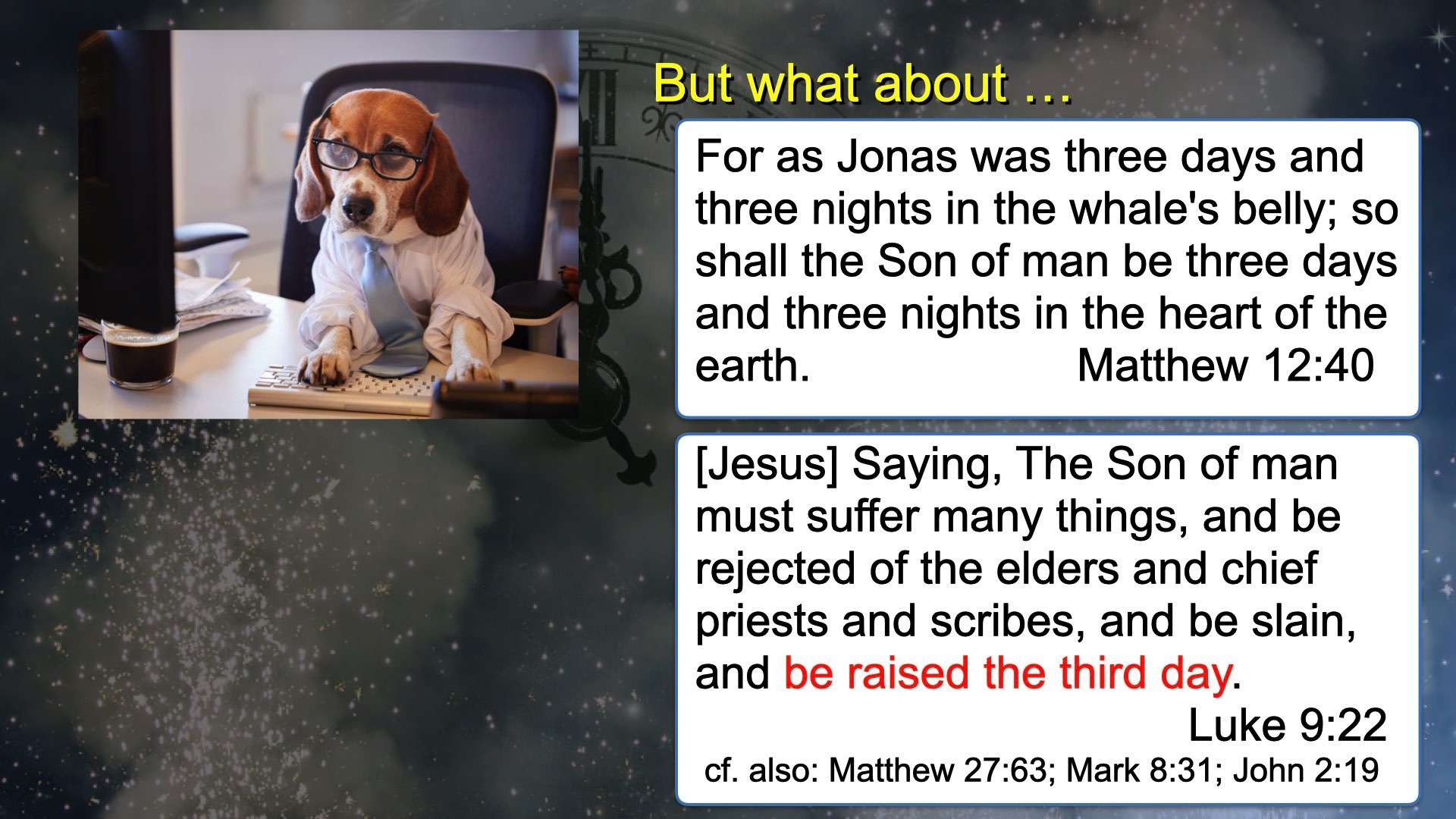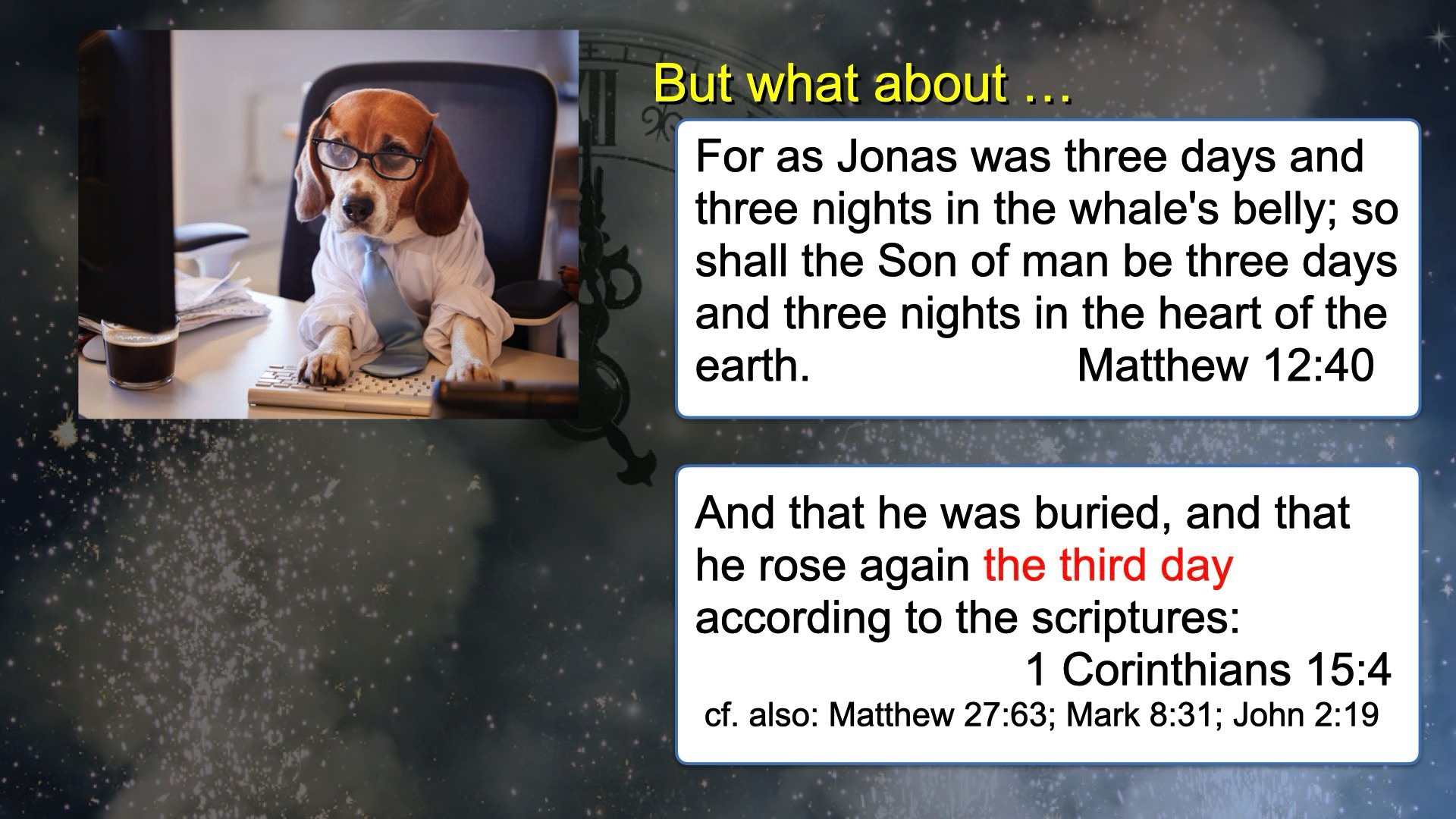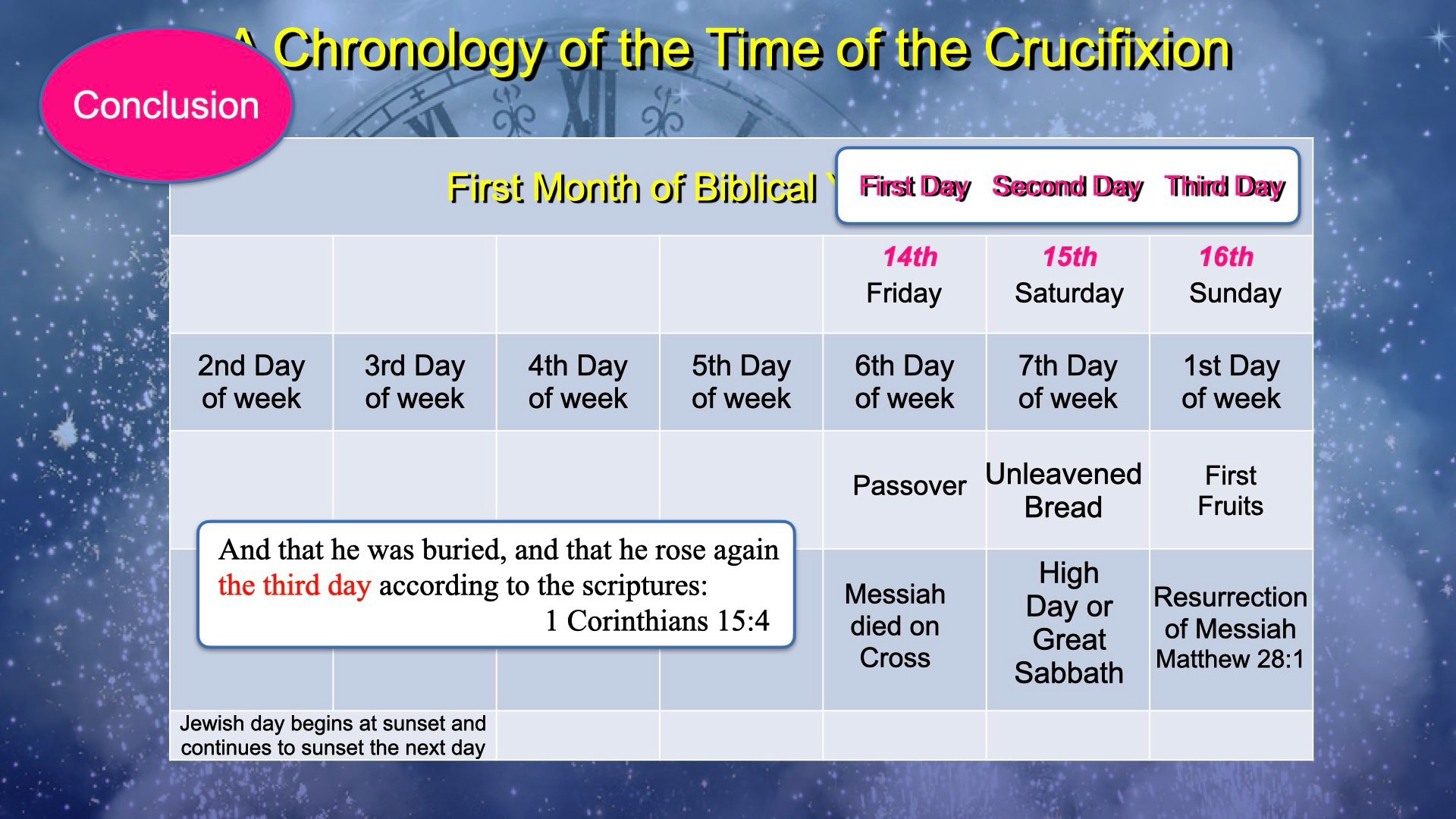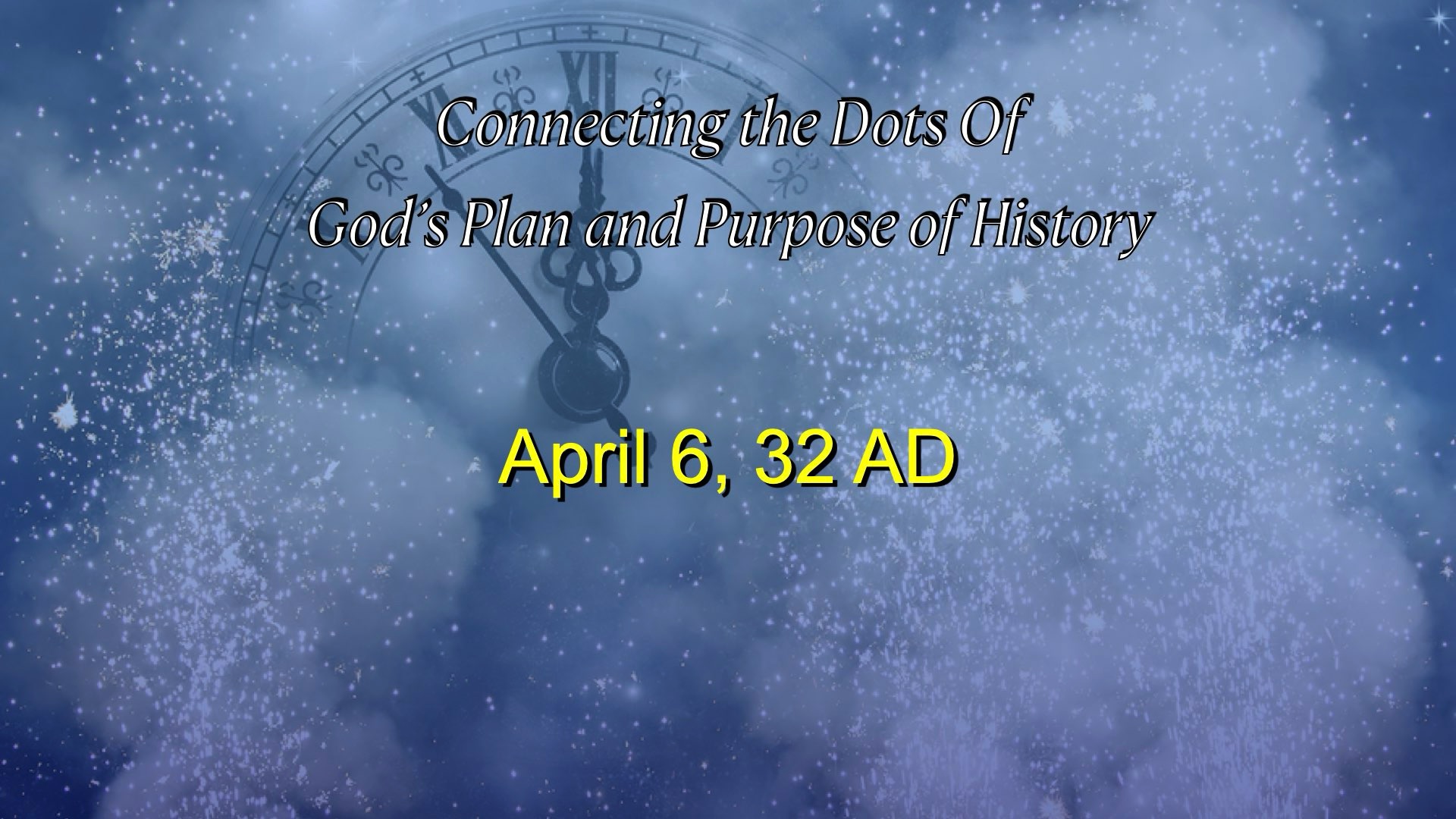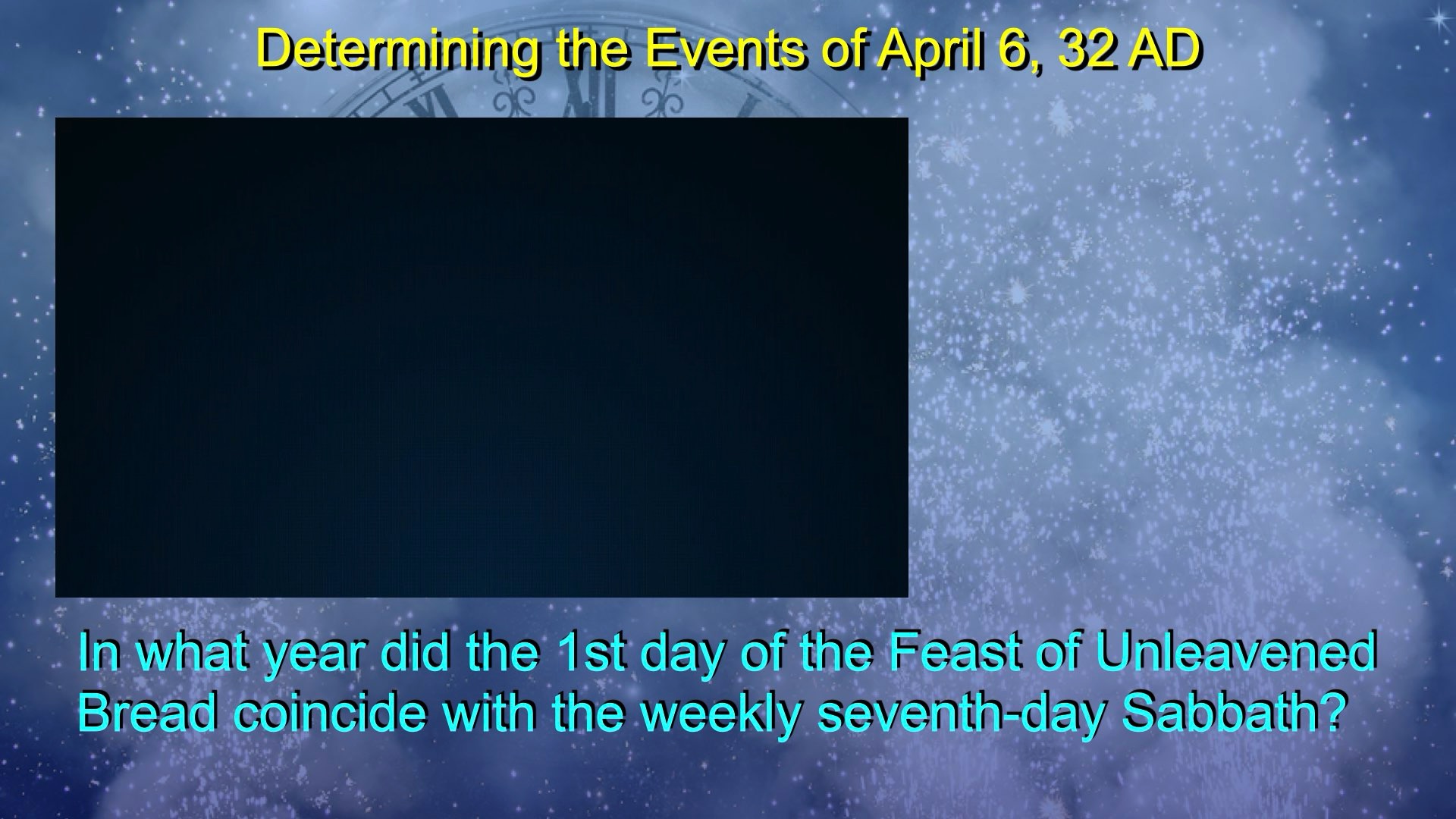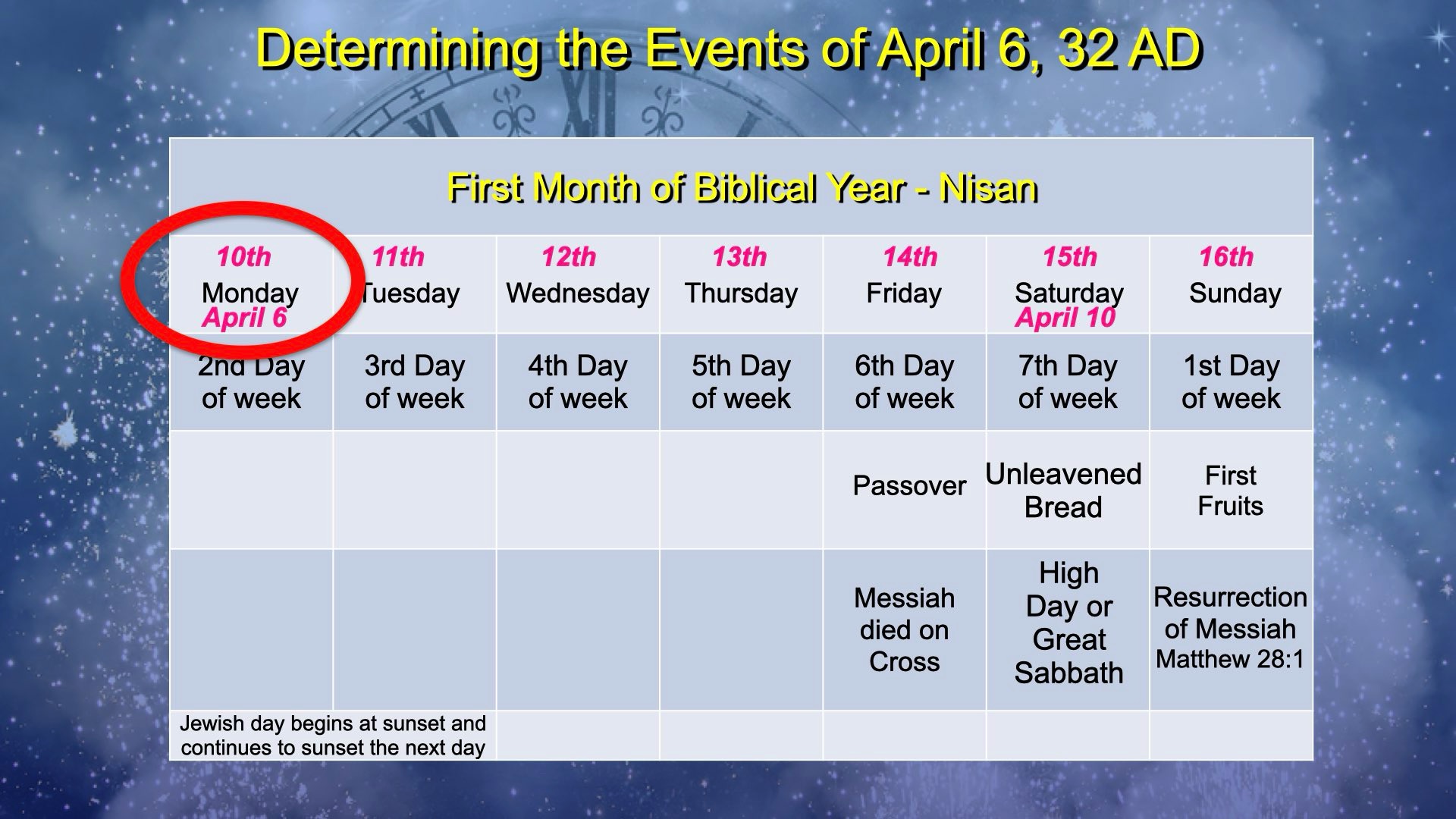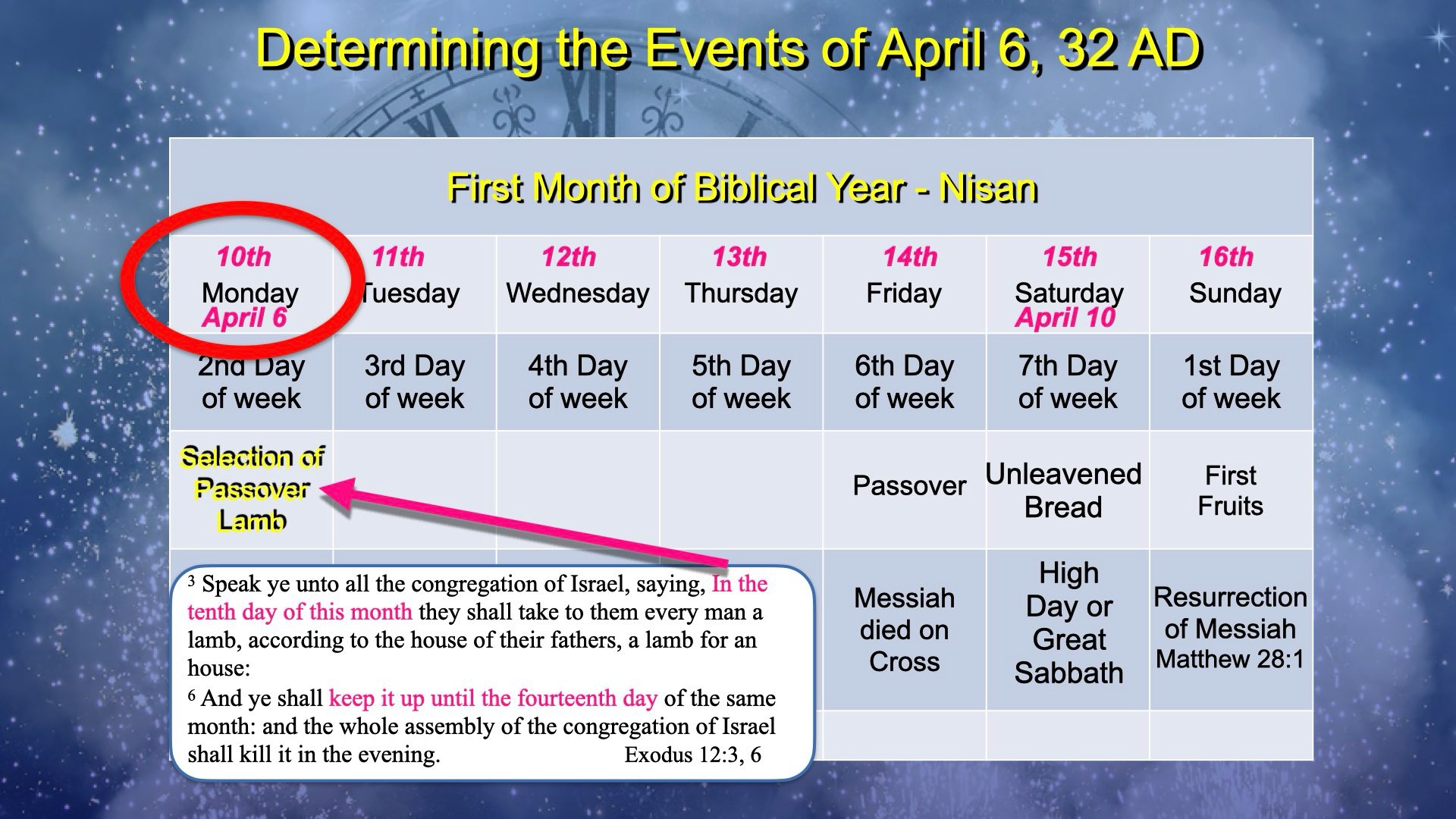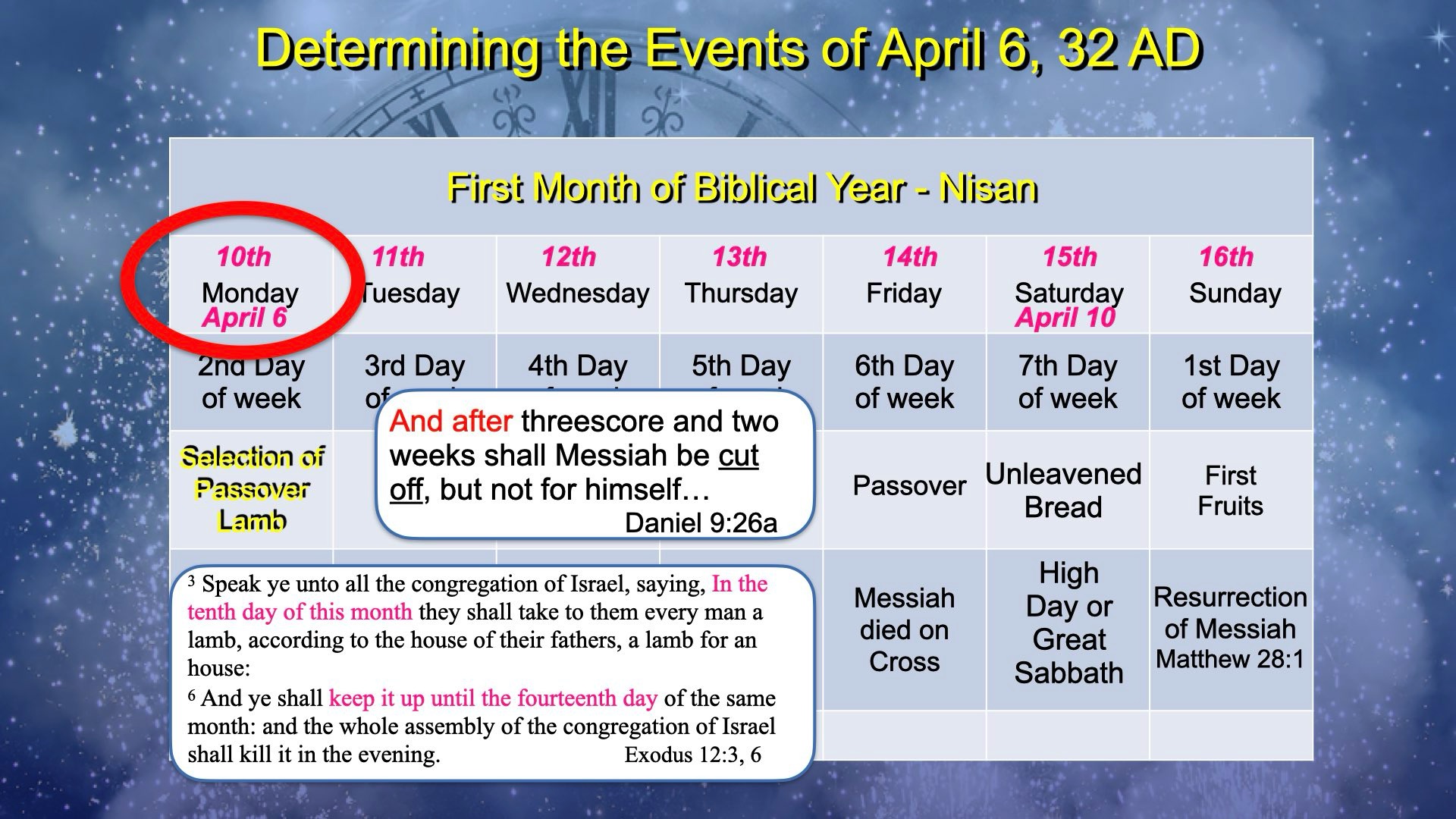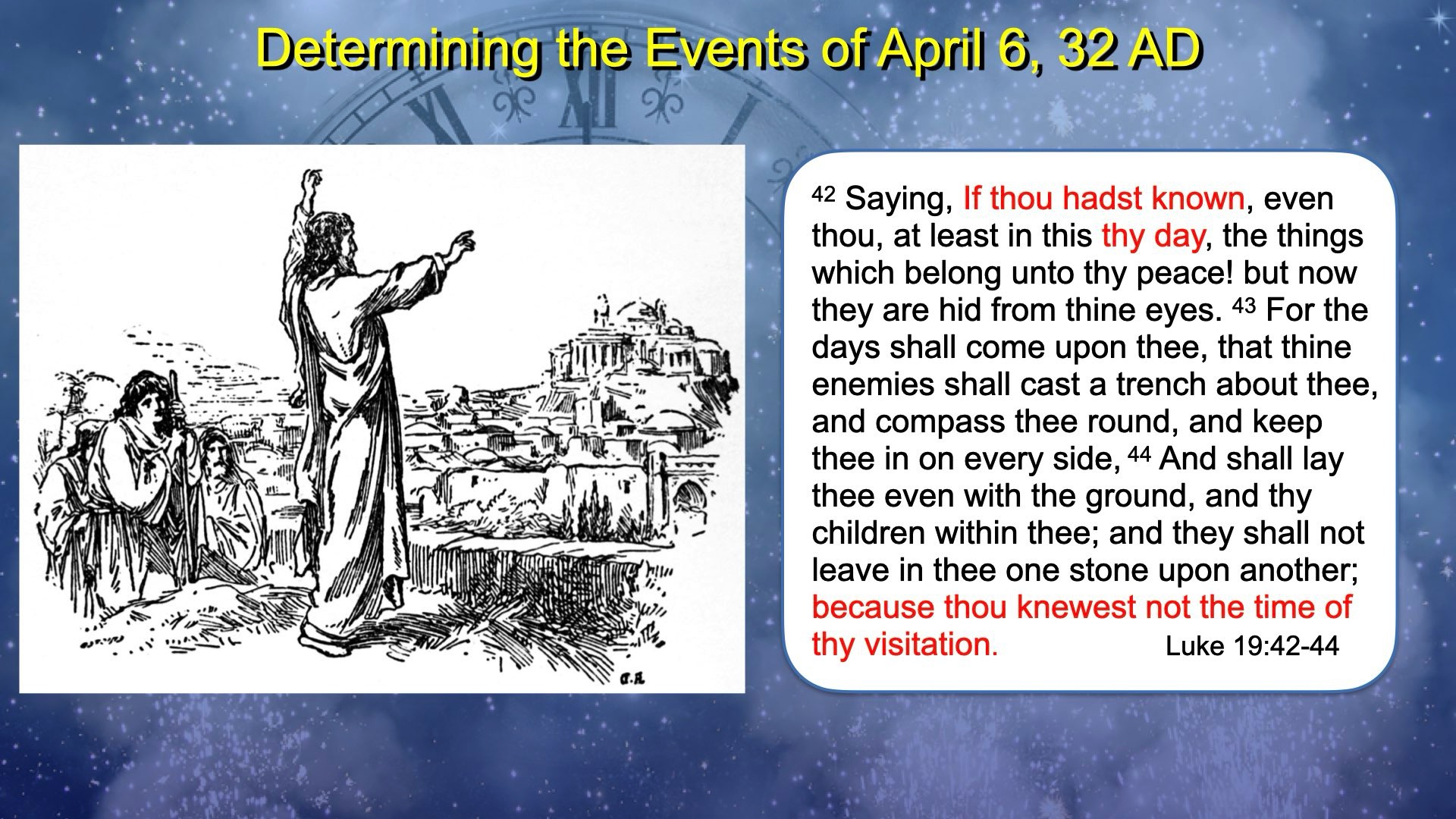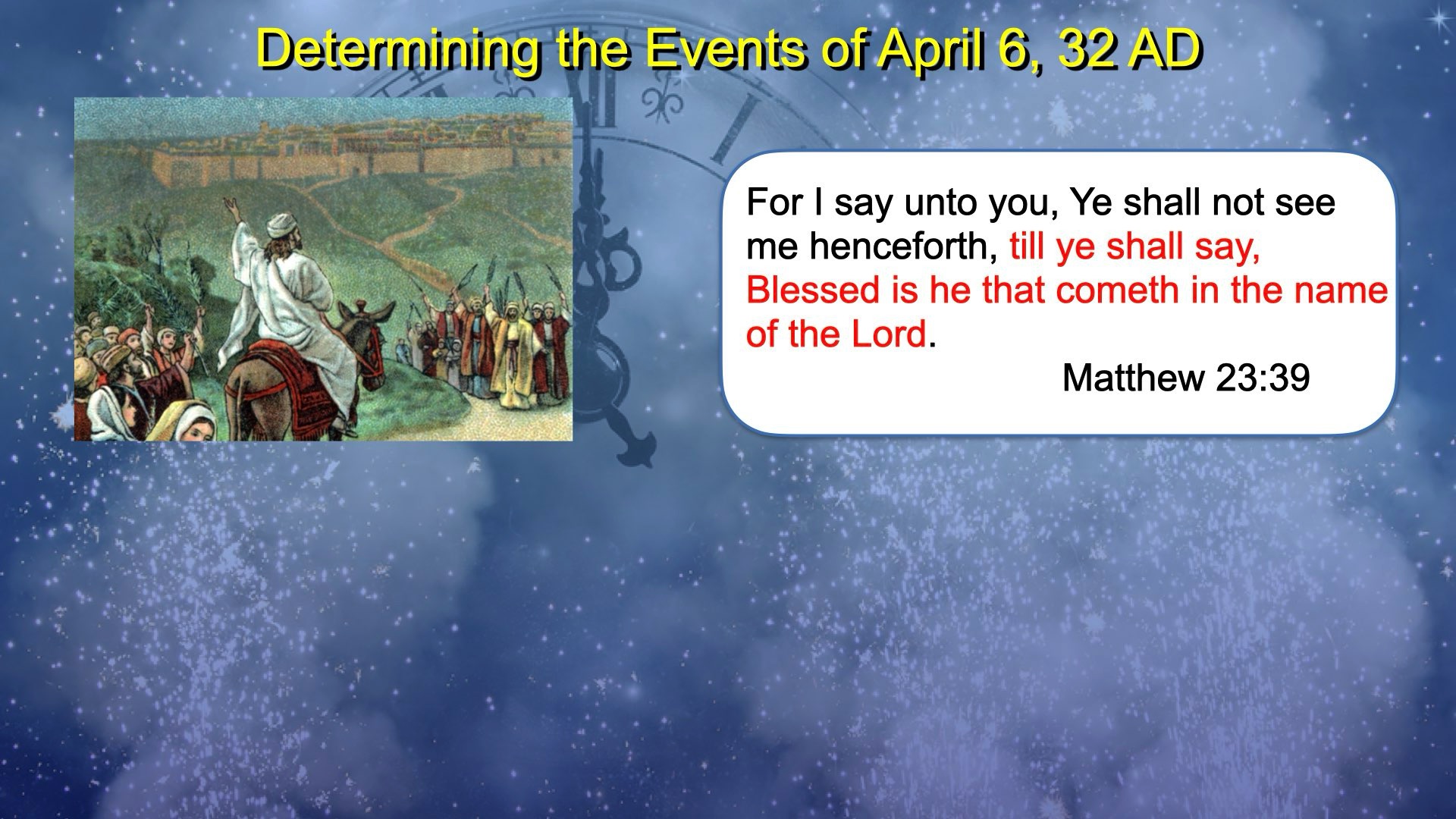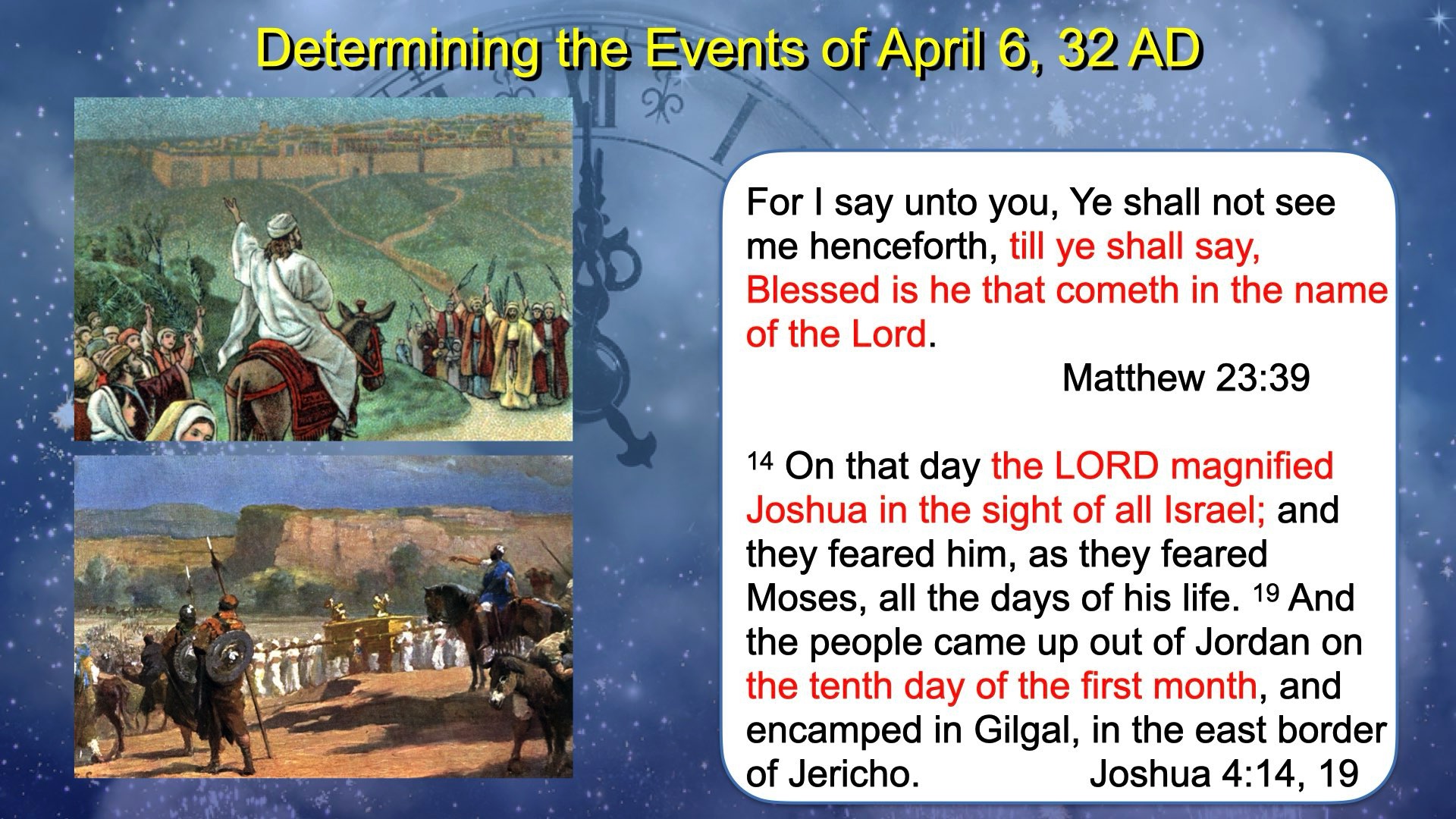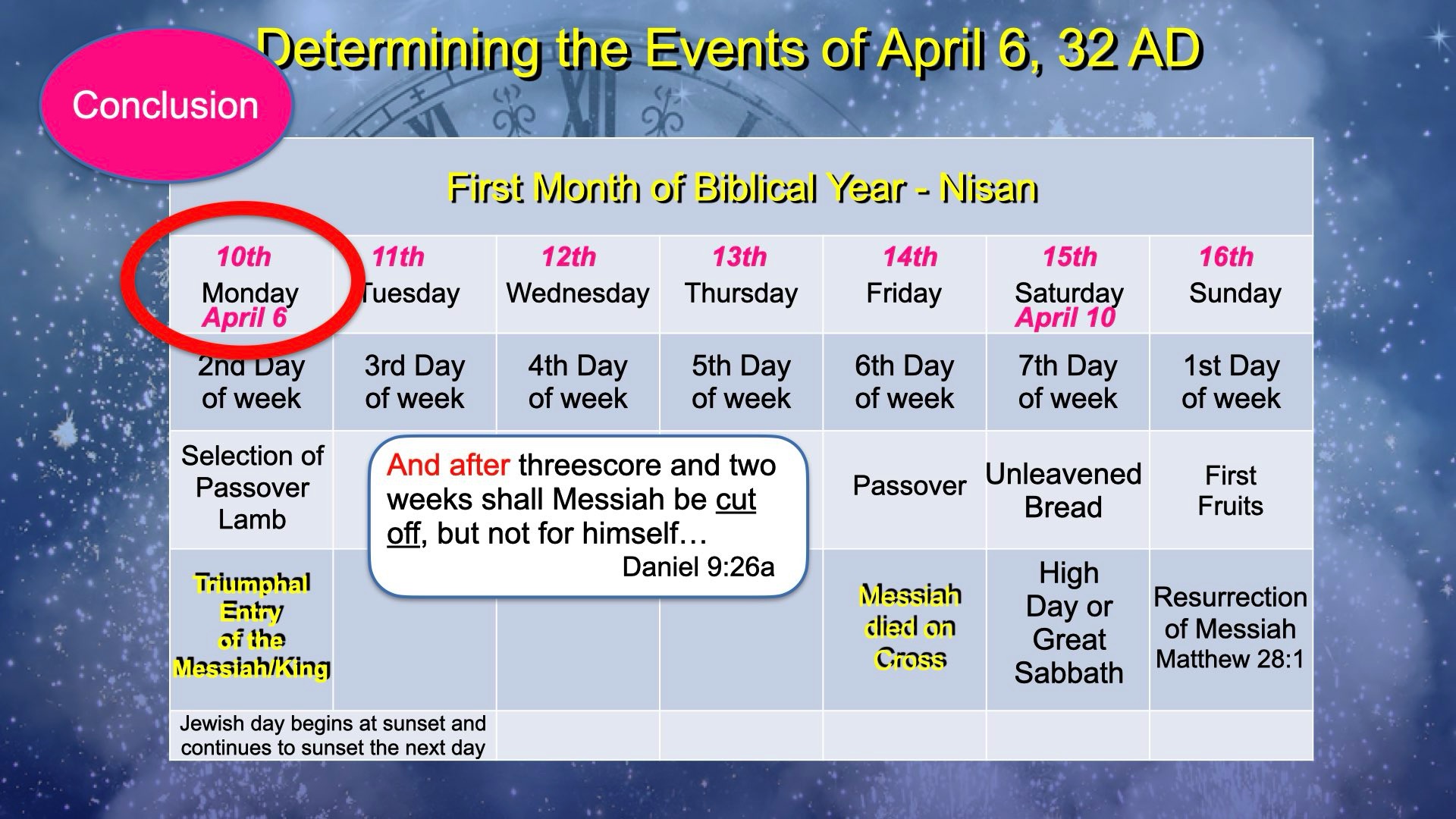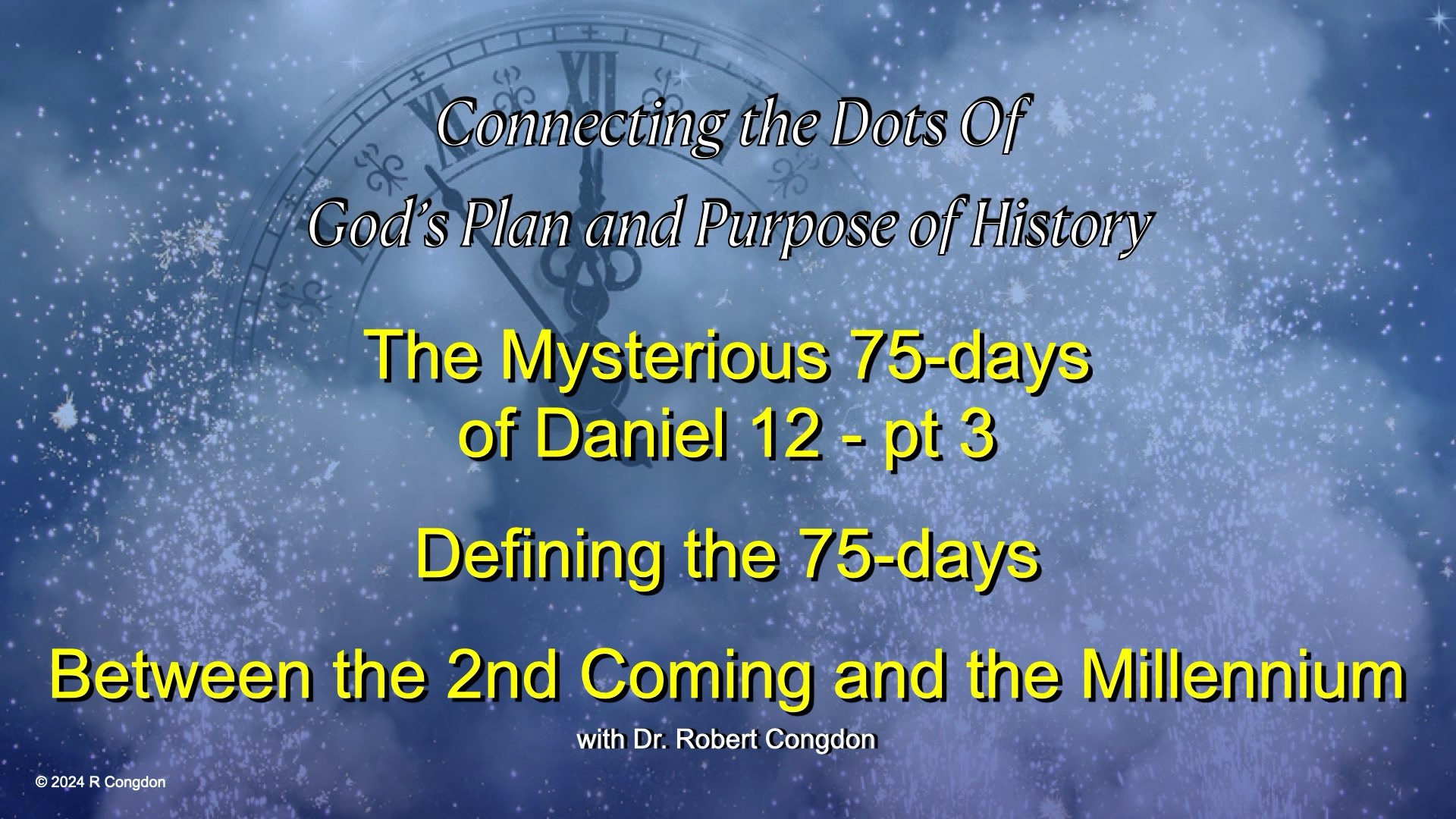Pt 3 - What Happened on April 6, 32 AD - Daniel 9 & 12 Prophecy

Millennium 101
This video, part 3, explains the significant events of April 6, 32 AD, the 10th day of the first month, that fulfilled Daniel's 69th week prophecy.
Dr. Congdon creates a biblical chronology of that fulfillment demonstrating a seldom taught link between this day in 32 AD and Israel's entry into the Promised Land on the very same day of the month, hundreds of years before.
With this unique understanding you will come to a greater appreciation of what the Lord did on April 6, 32 AD, Palm Sunday or more appropriately why it is called The Triumphal Entry.
Additionally, this chronology resolves the apparent contradiction between the Bible's record of Jesus being crucified on a Friday and resurrected on the following Monday, just 3 days and 2 nights in the grave, and our Lord's statement in Matthew that He would be in the grave 3 days and 3 nights.
Please join us in this fascinating study of the events of the Crucifixion week.
2:30 The "After" of Daniel 9:26 Prophecy
6:10 Do the 62-week Prophecy and the 69-week Prophecy End of the Same
Day
9:50 Creating the Necessary Chronology - a unique biblical calendar
20:30 BUT what about the 3 Days and 3 Nights of Matthew 12:40
27:30 April 6, 32 AD - what really was fulfilled on that day in history
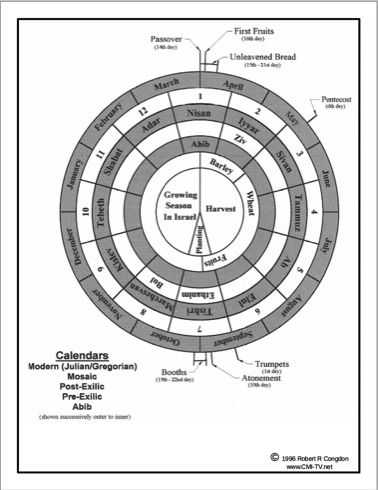
Feasts & Calendars of the Bible
Explanatory Notes
Understanding the chronology of events in the Bible is often critical in interpreting a Biblical passage. Knowing when some event occurred explains a person’s actions.
For example, in Nehemiah 2:1, Nehemiah reveals his sadness before the king for the first time. Because this was not done by cup bearers, he risked the king’s displeasure and censure. The answer as to why he did this lies in noting the month-Nisan (Neh. 2:1). If one is unfamiliar with the calendar, this means little. But anyone who understands the importance of the month of Nisan understands what moved Nehemiah.
In Kislev (Neh. 1:1), Nehemiah learned of the dismal state of Jerusalem and became very upset (Neh. 1:4). Yet, Nehemiah remained silent for four months. Why during Nisan could he no longer control his emotions? By looking at the events of Nisan and seeing that this was the first month of the Mosaic/Biblical calendar, one sees that it was Passover, one of three times a year, a Jewish man’s attendance at the Temple is command by Scripture in Deuteronomy 16:16.
The Jewish Passover sacrifice can only be performed at the Temple in Jerusalem. Each year at Passover, a Godly Jewish person in exile, such as Nehemiah, felt a deep sadness and longed to see Jerusalem with the Temple restored, so that the Passover could once more be observed at the Temple site.
This chart enables one to compare specific Biblical dates, even when the events are recorded using the different lunar calendar systems. Four calendars are used in the Bible. Relating them to the modern calendar, a solar calendar, results in five calendar systems.
In order to coordinate the five calendars, one must first understand the concept of the circular calendar key (see Figure). Each concentric circle represents a calendar used by the Biblical writers (the modern calendar excepted).
Mosaic or Biblical Calendar
This lunar-based calendar is the true Hebrew calendar of God. It was God who instructed Moses to name the months and start the year in the spring (Exodus 12:2). God simply named the months numerically, i.e. first month, second month, etc. At that time, the peoples of the ancient world, being agricultural, typically started their calendar systems in the early autumn, with the olive harvest. However, the Hebrew calendar was to be a unique memorial commemorating the birth of the nation of Israel as being the first month of the year. Further, Israel and the things of Israel were not to reflect the pagan world.
Abib Calendar
The origins of this ancient calendar are unknown. It is not Phoenician nor Canaanite. It is a lunar calendar which is referenced only four times in the Bible. All references are to the month of abib and to when Israel “came out of Egypt” during the Passover.
It is an agricultural calendar based upon the meaning of abib (ripened). Abib is always associated with the barley crop. This is the only known month name for this calendar.
Pre-Exilic Phoenician Calendar
This calendar is believed to be a lunar Phoenician calendar because the names of the months are of Phoenician origin. The Bible records only three of the months of this calendar in 1 Kings 6 and 8. It should be remembered that Solomon had Phoenicians as the skilled craftsmen and recorders of the work of the Temple.
Ziv means month of flowers, Ethanim - month of perennial streams, and Bul - rain or showers. The remaining names can be found in extra-Biblical Phoenician materials
Post-Exilic Babylonian Calendar
Upon the return to Israel, the Hebrews brought back many aspects of the Babylonian culture, including this calendar. The fact that it was a lunar calendar and began in the spring, made assimilation easier. Ezra, Nehemiah, Esther, and Zechariah use this calendar. Certain references facilitate cross-referencing with the Mosaic or Biblical Calendar (i.e., Esther 8:9).
It is important to note that during this period in Israel’s history, both calendars were in use. Nehemiah, being the king’s cup bearer preferred to use the Babylonian Calendar, while Ezra used the Mosaic in all references but one.
Modern Calendar
The modern calendar is based upon the solar year of 365 days, unlike the ancient calendars of 360 days. Consequently, the outer ring of our chart “rotates” relative to the inner four calendars’ rings shown. This difference explains why Resurrection Sunday (Easter) is not necessarily on the same day as the Jewish Passover every year.


